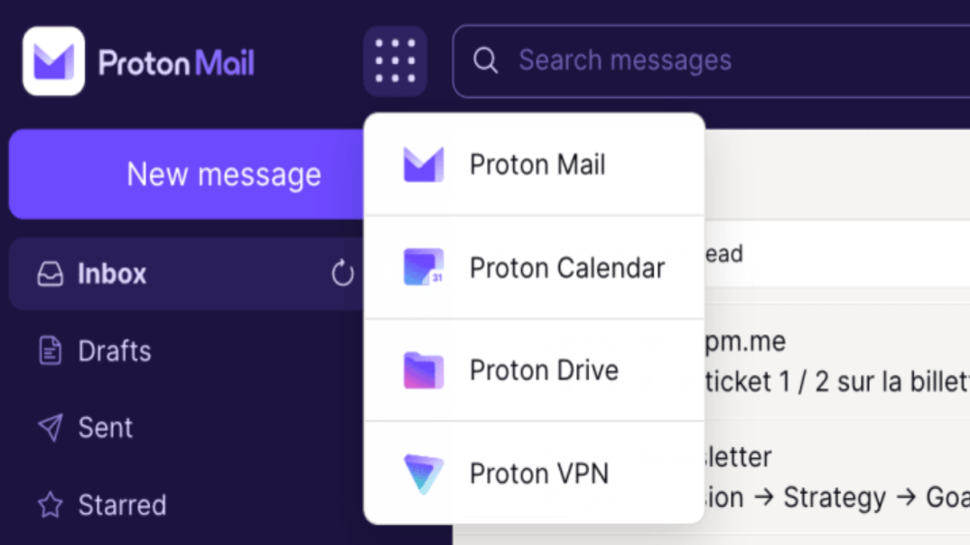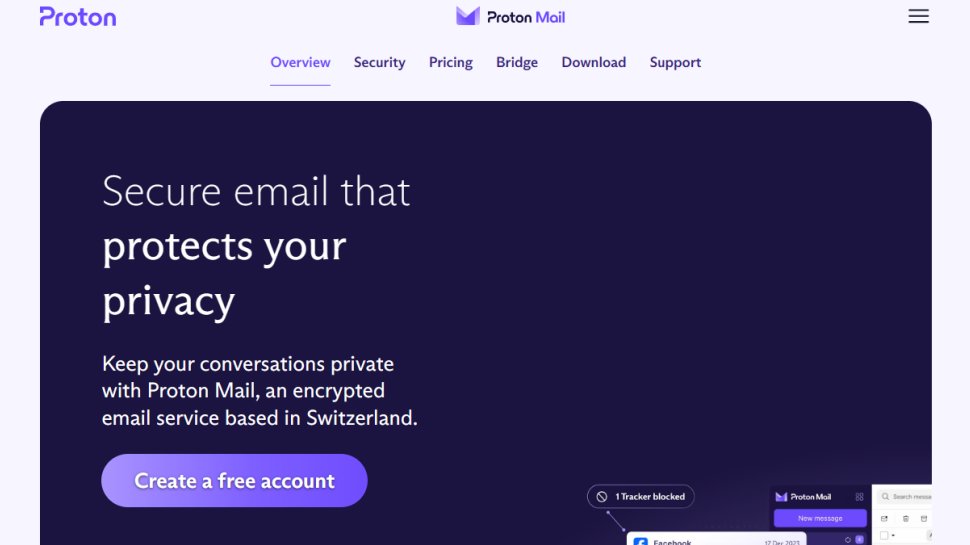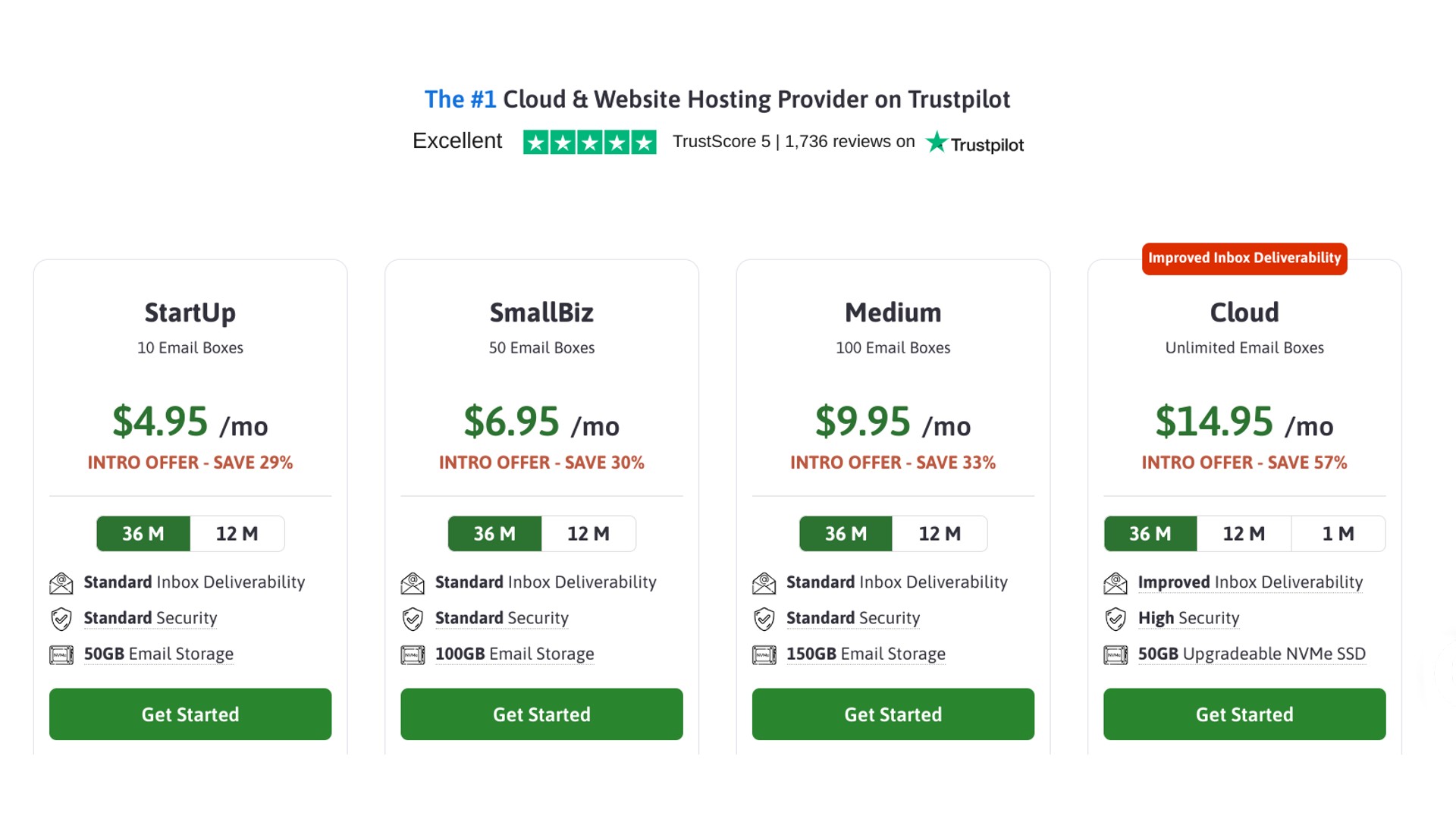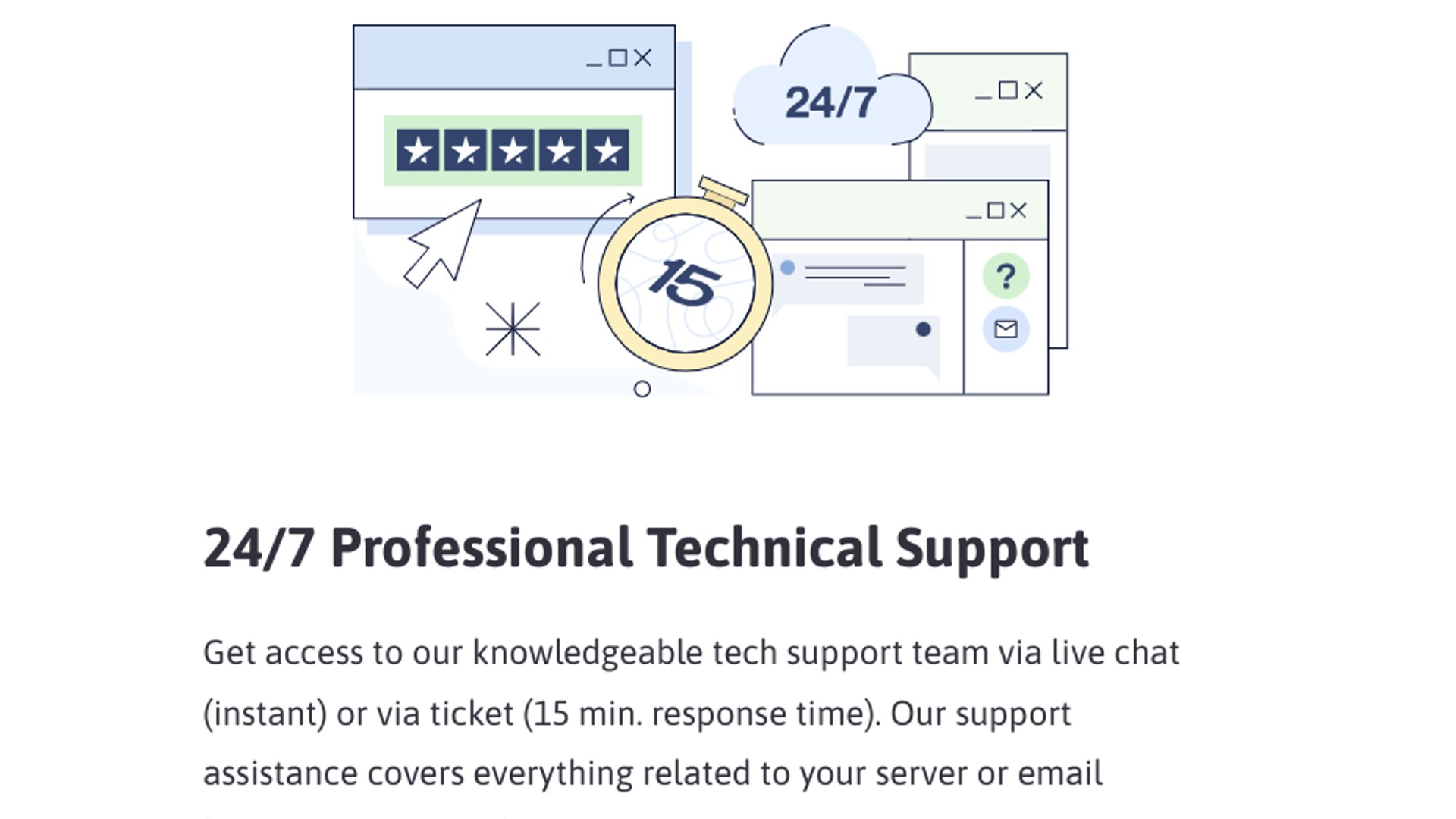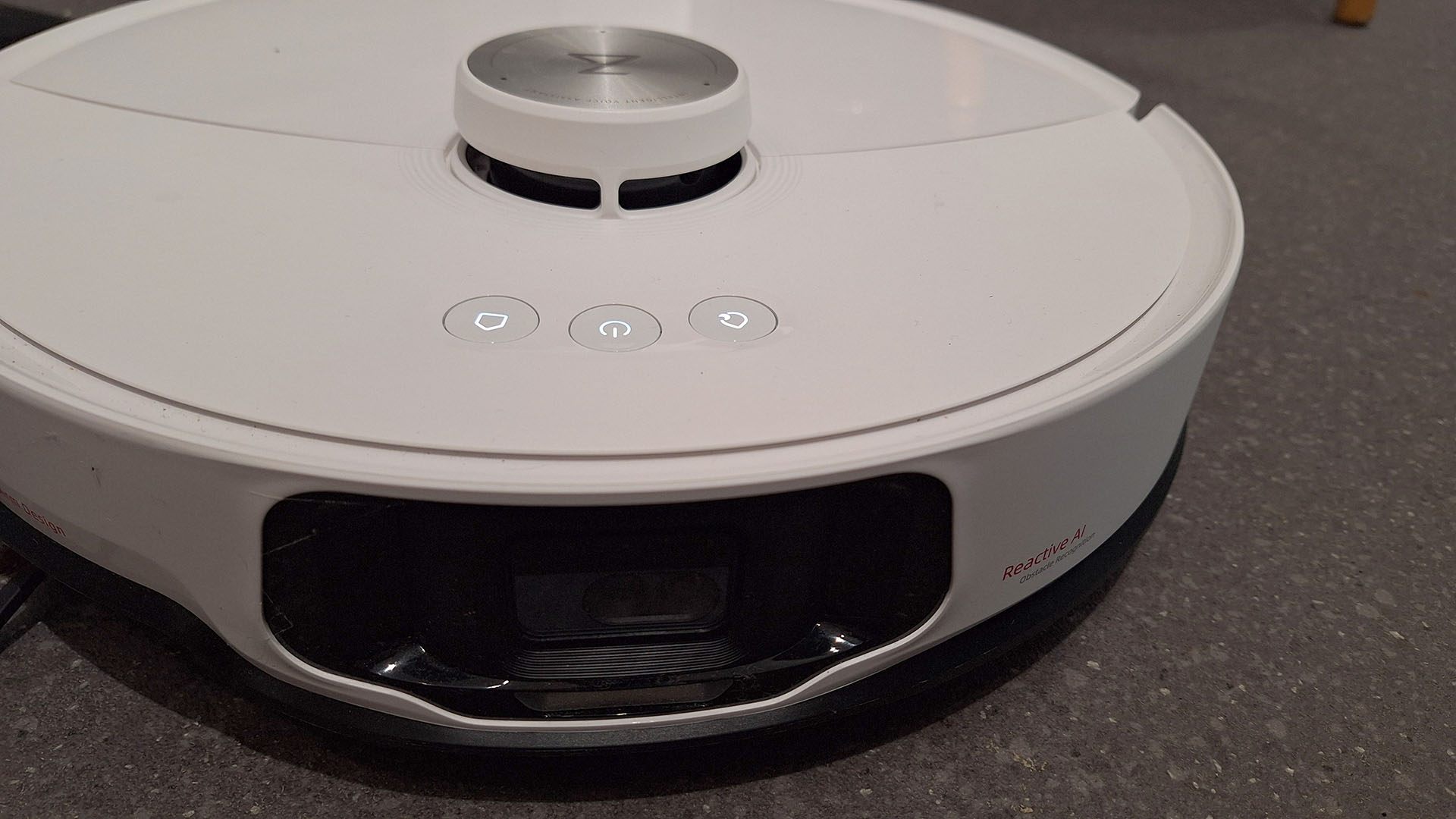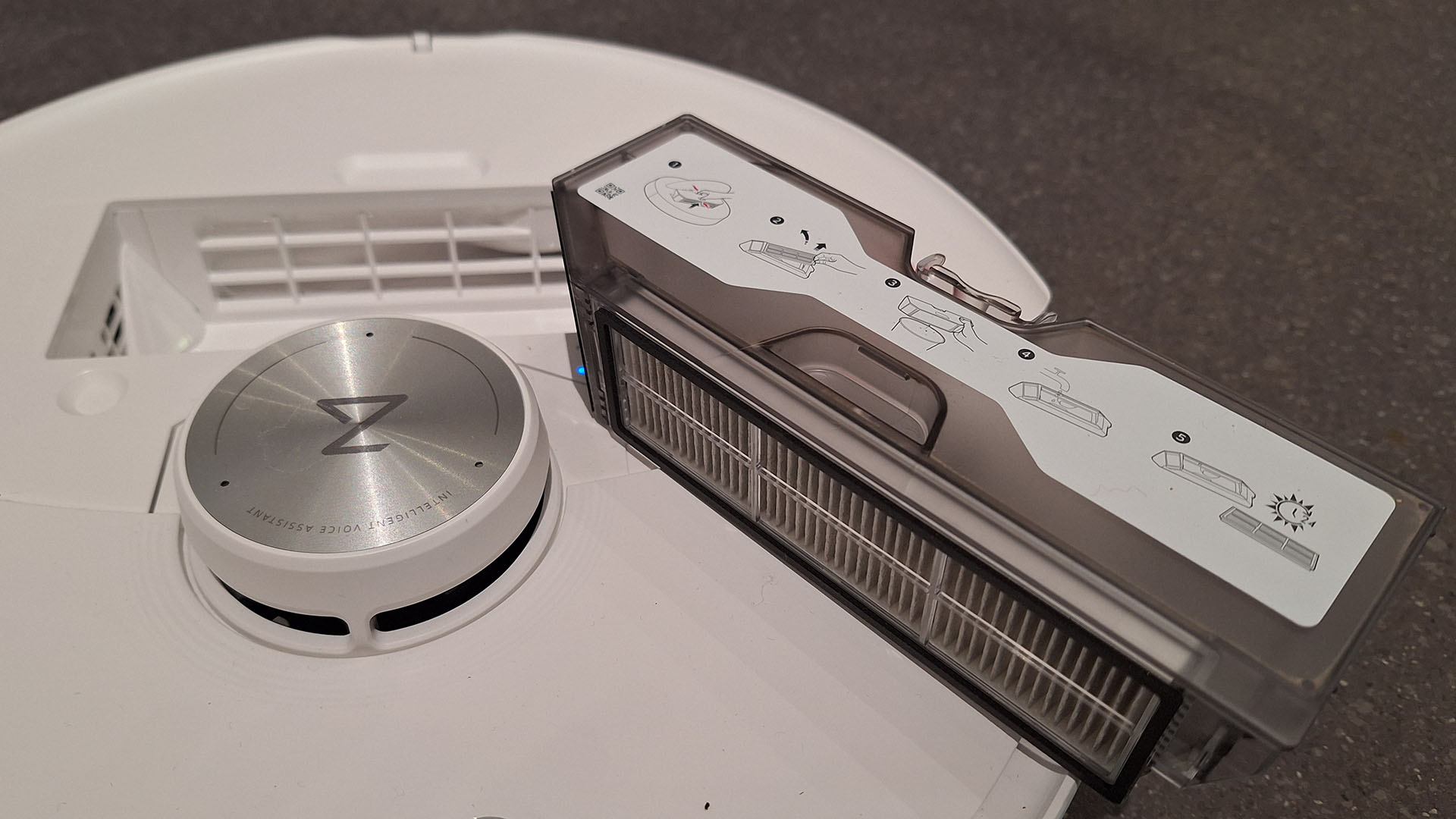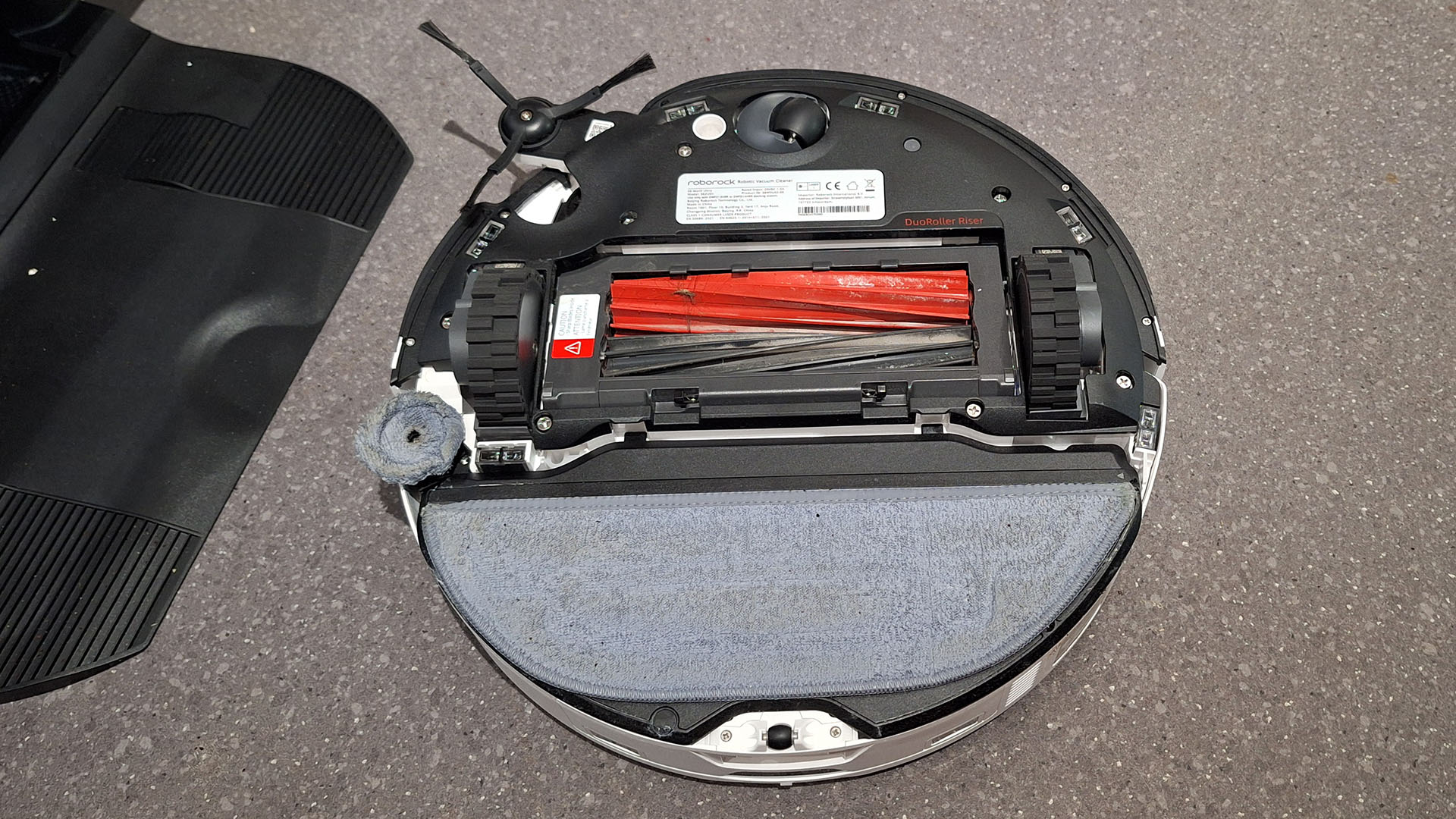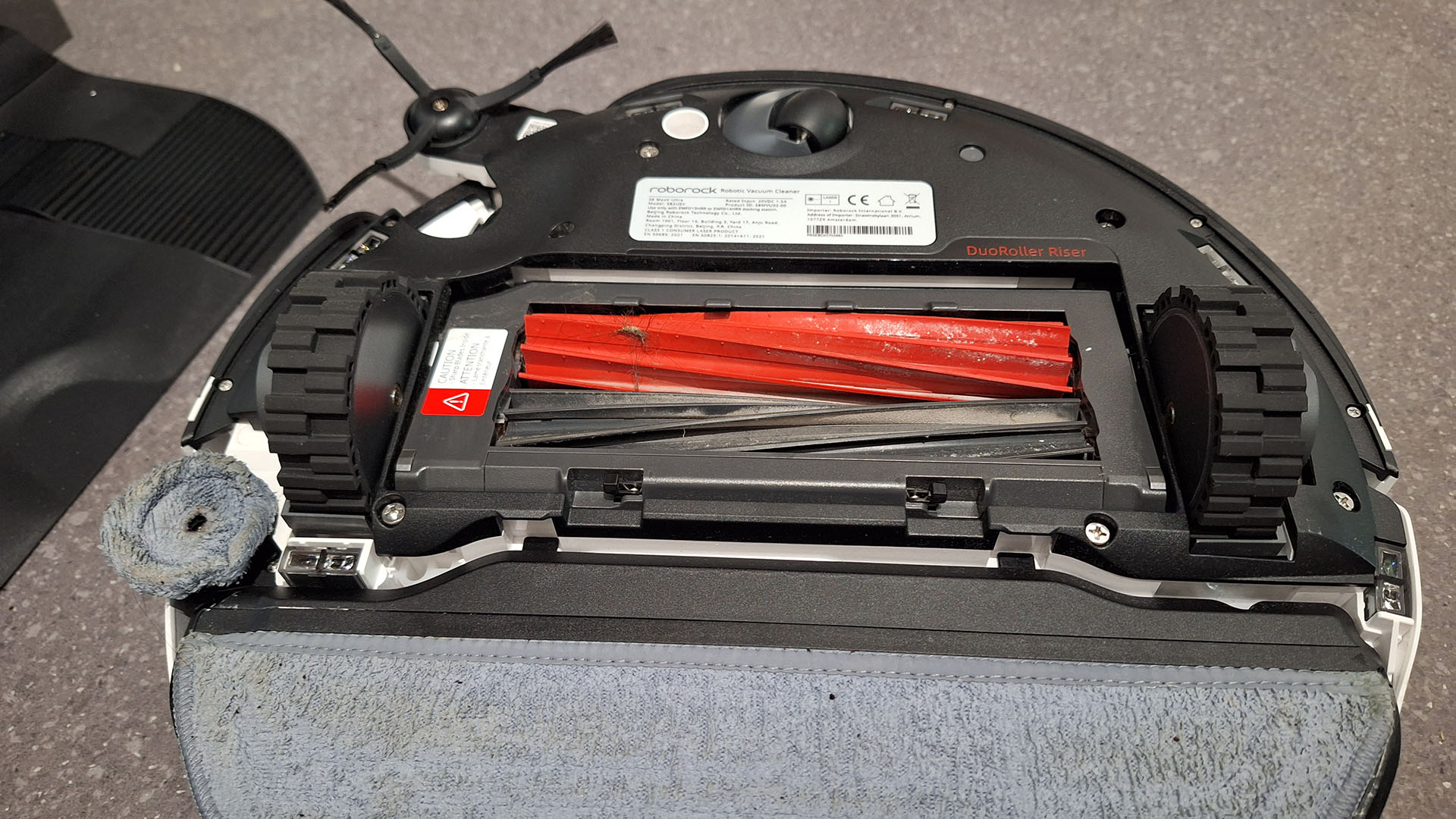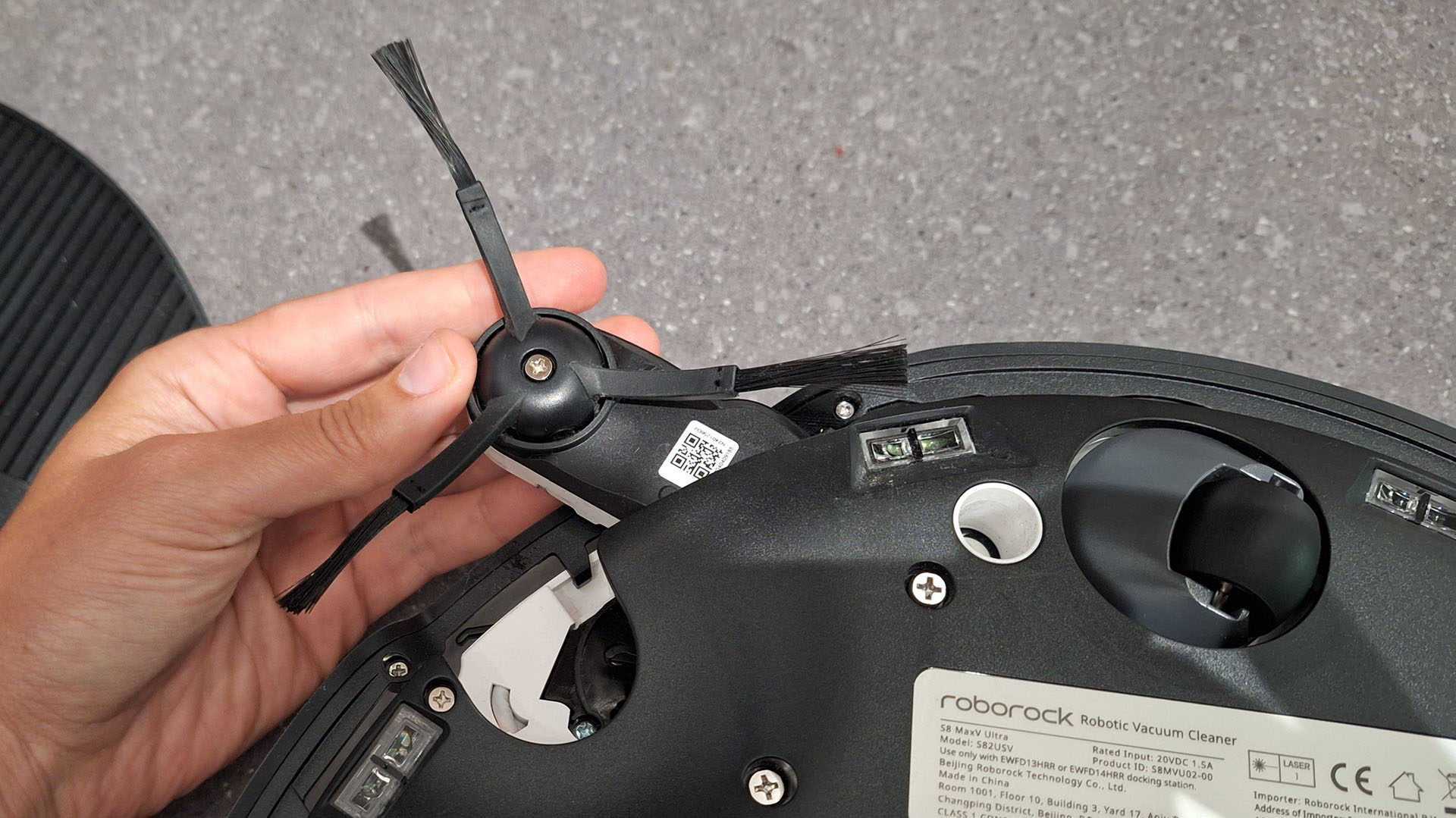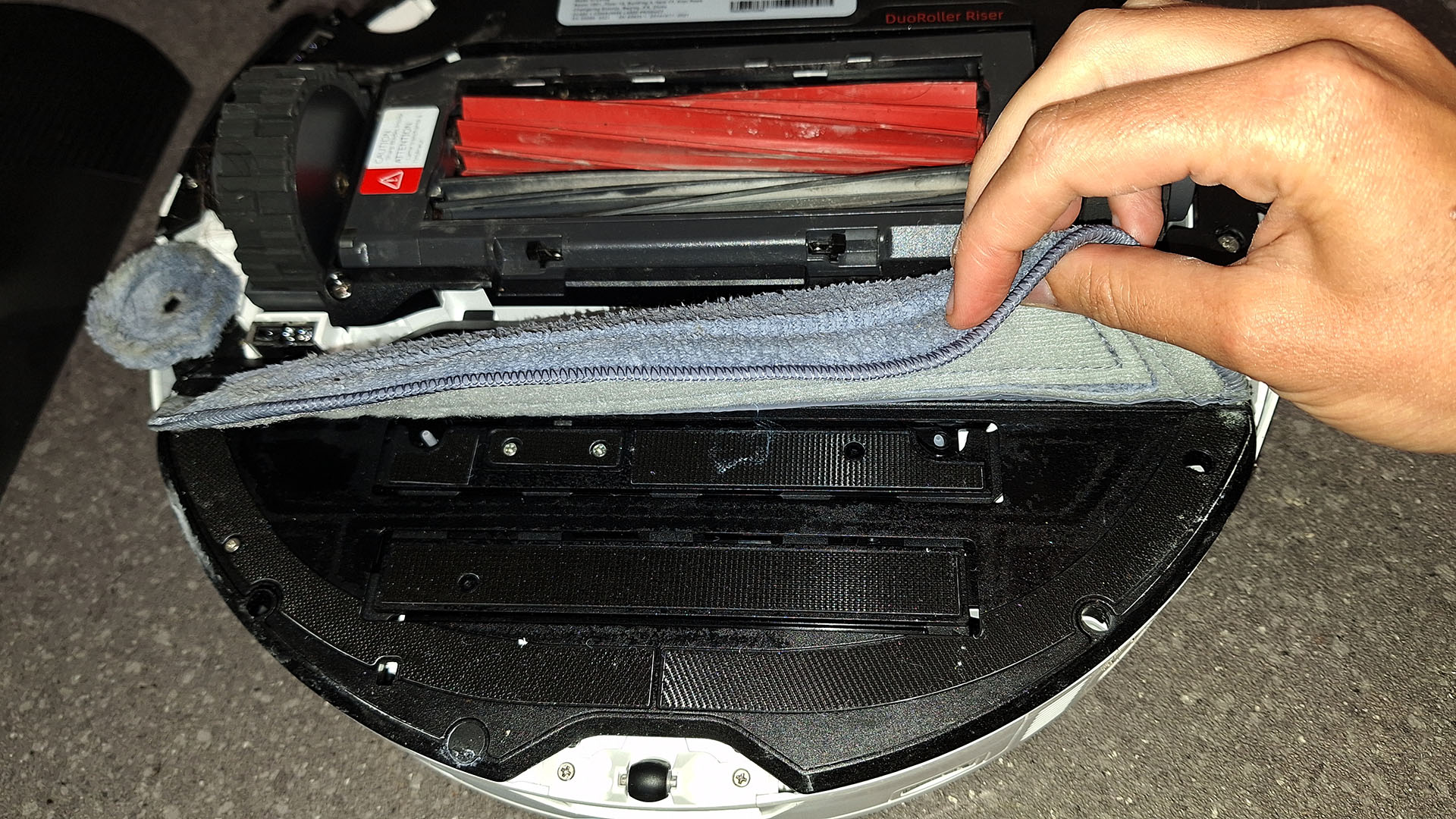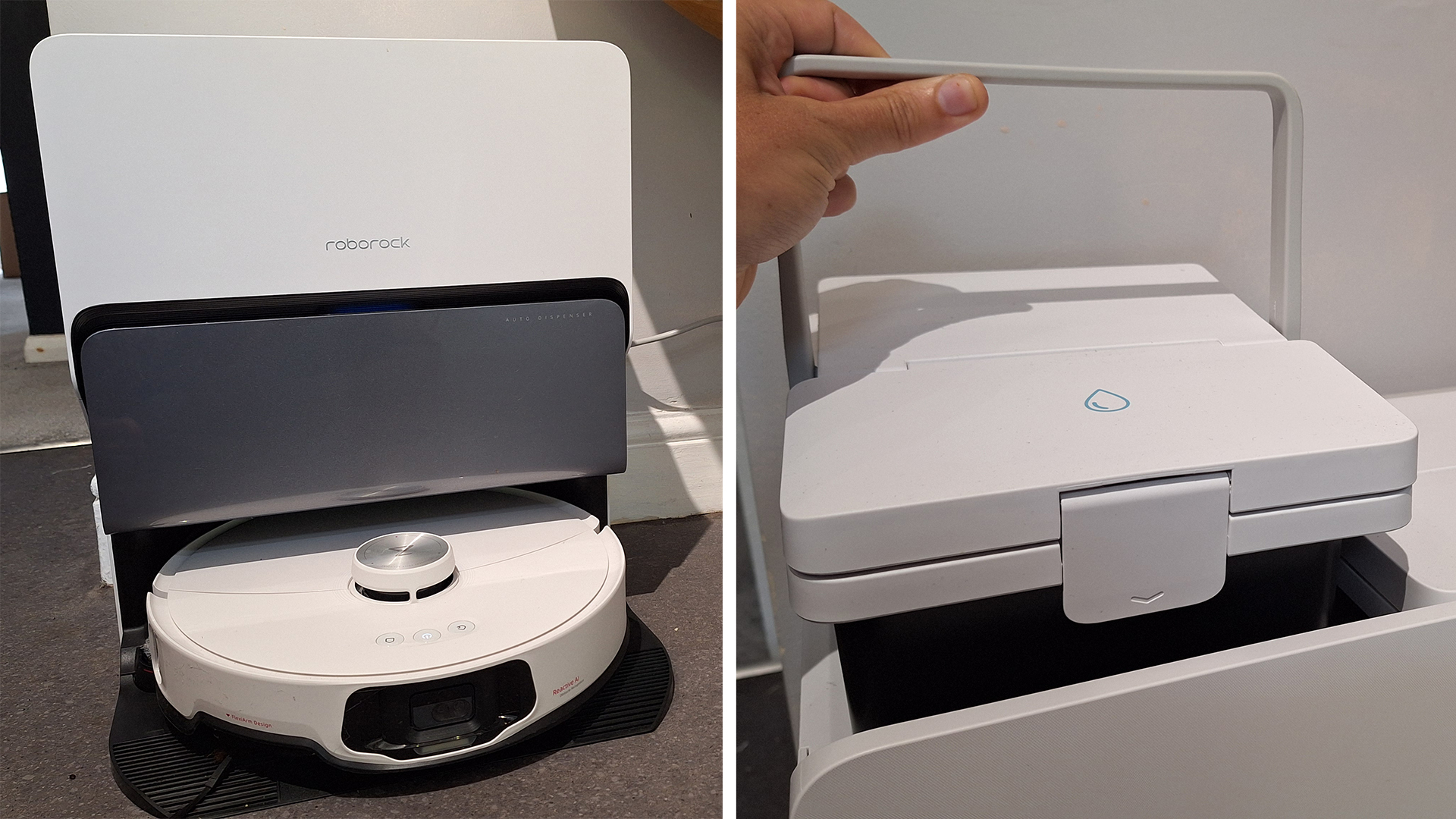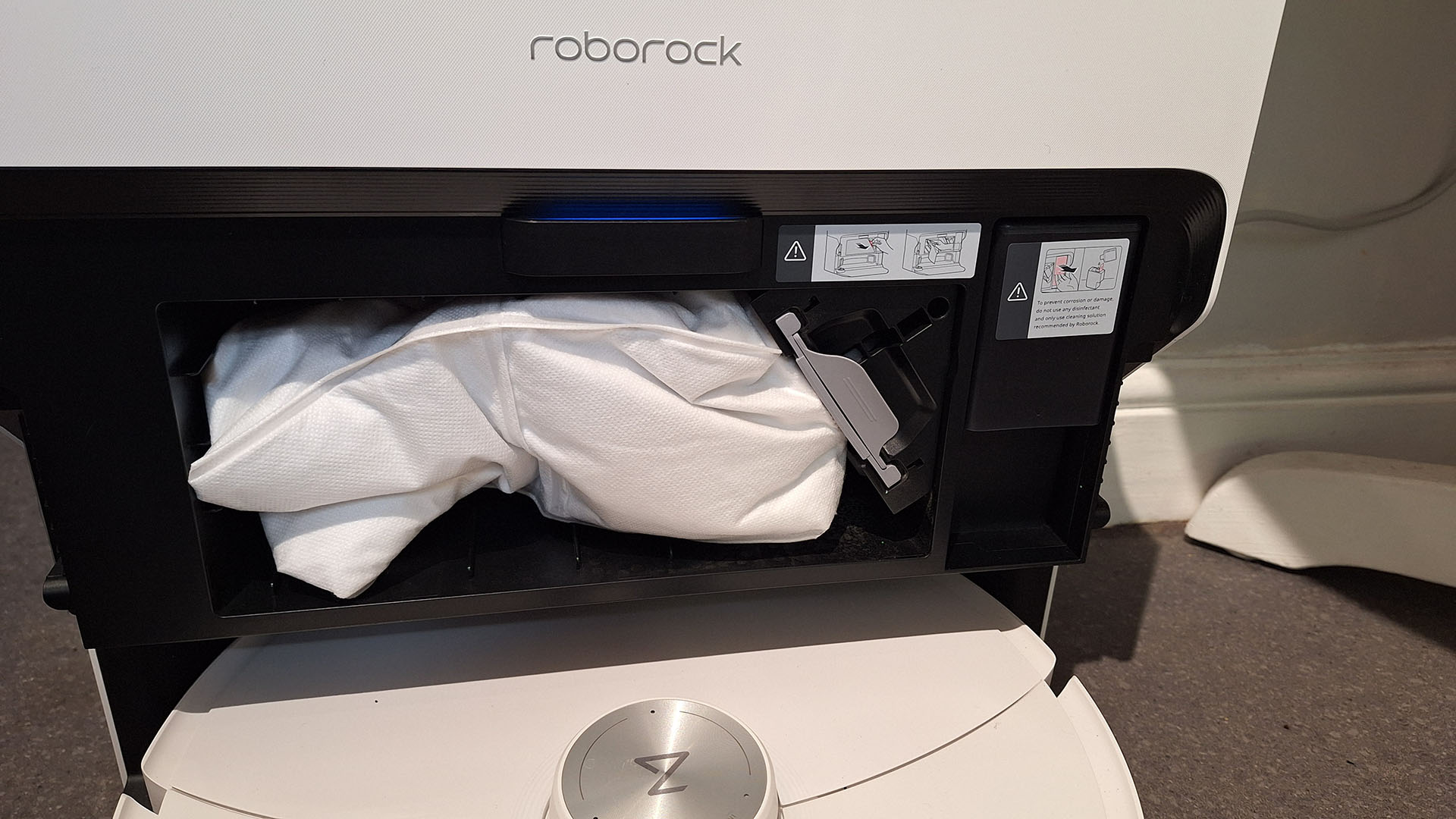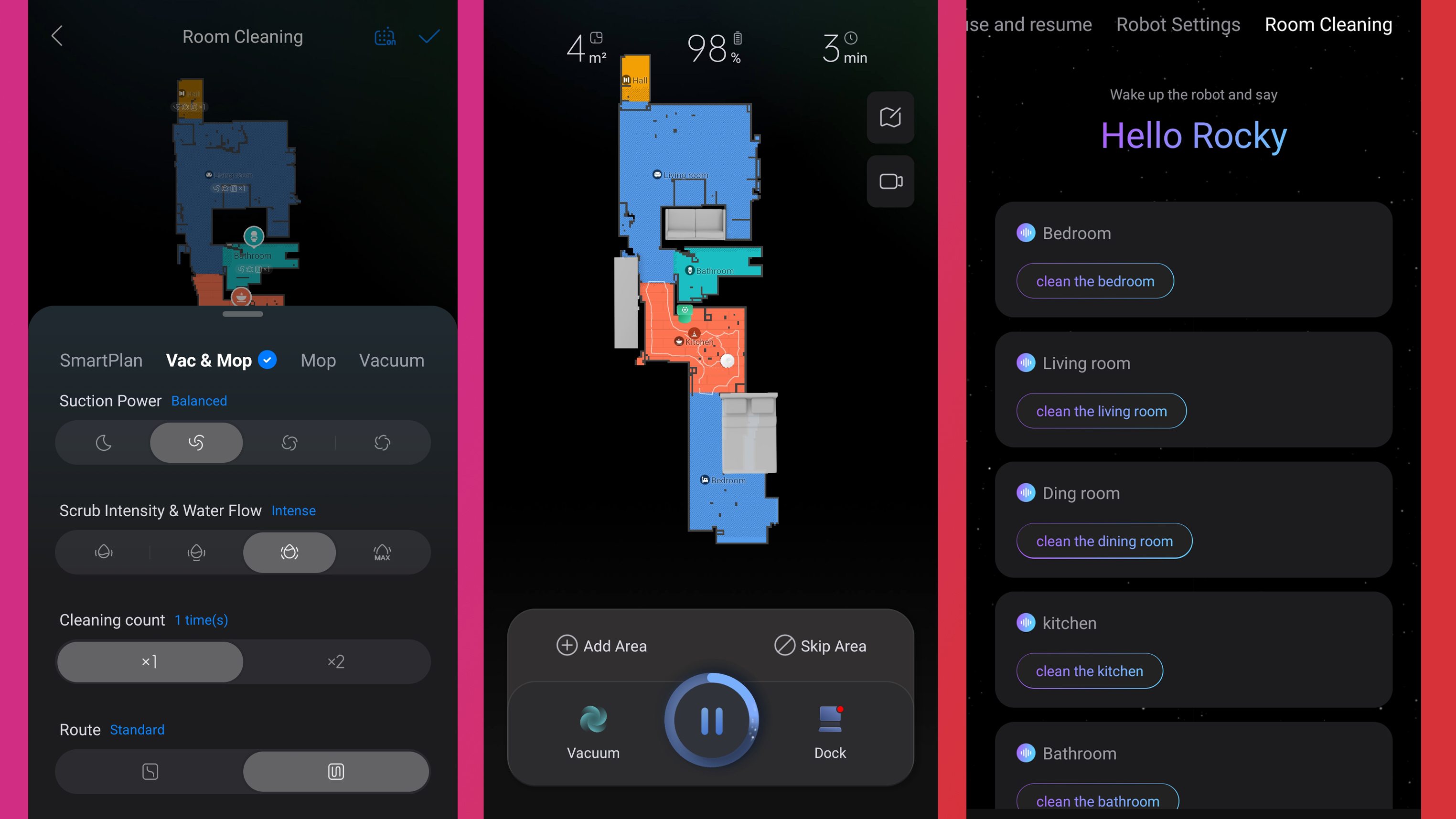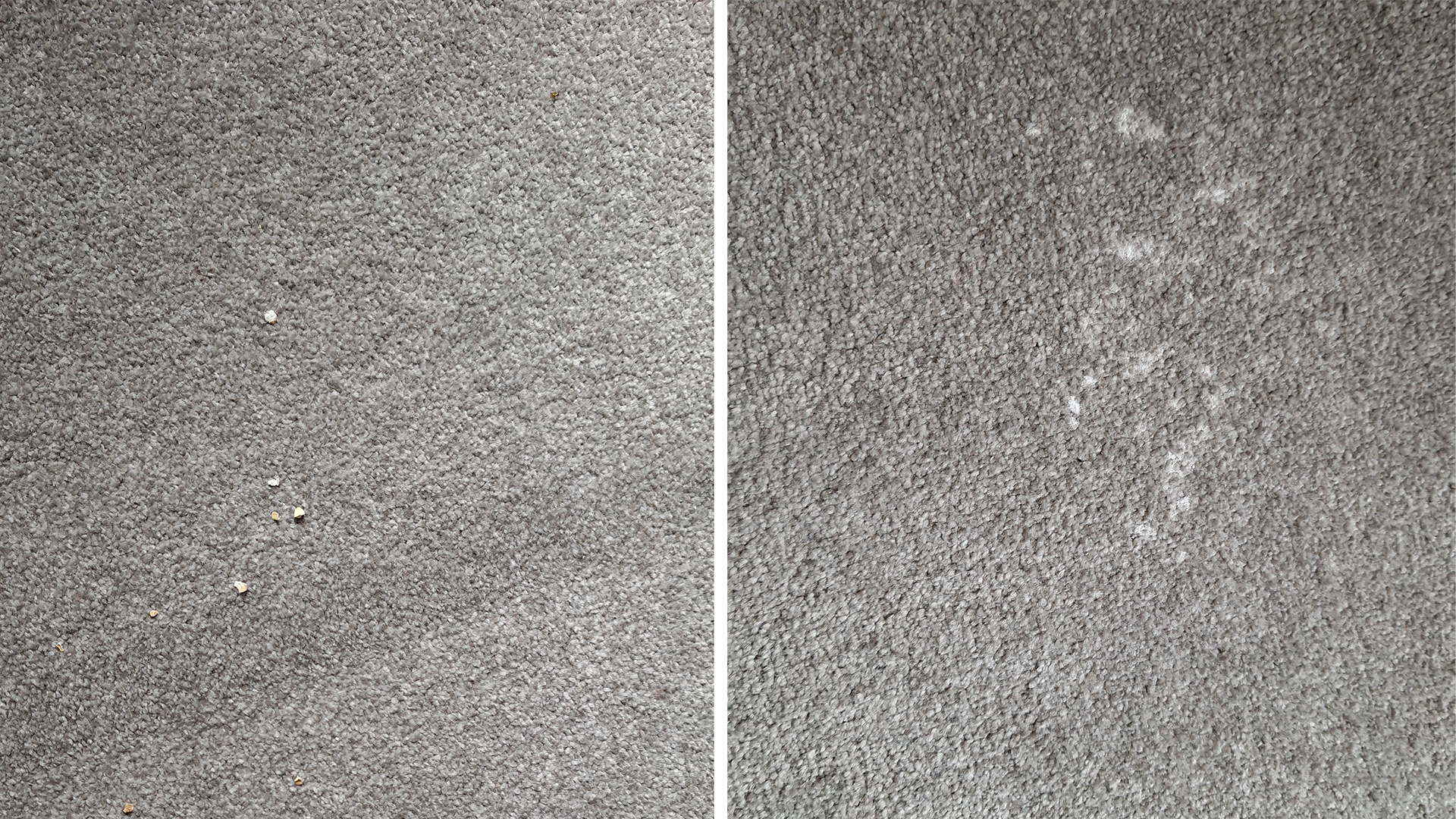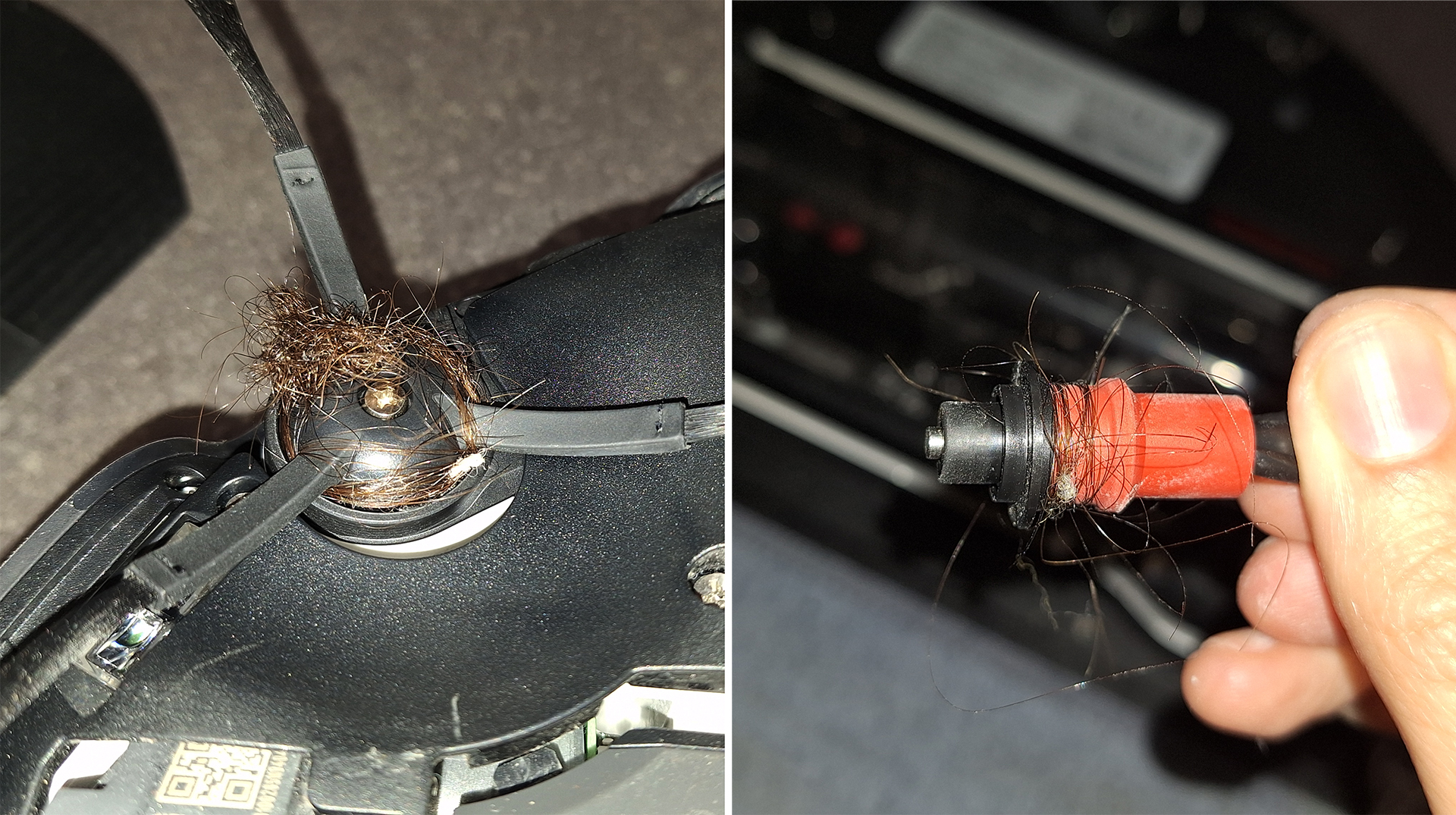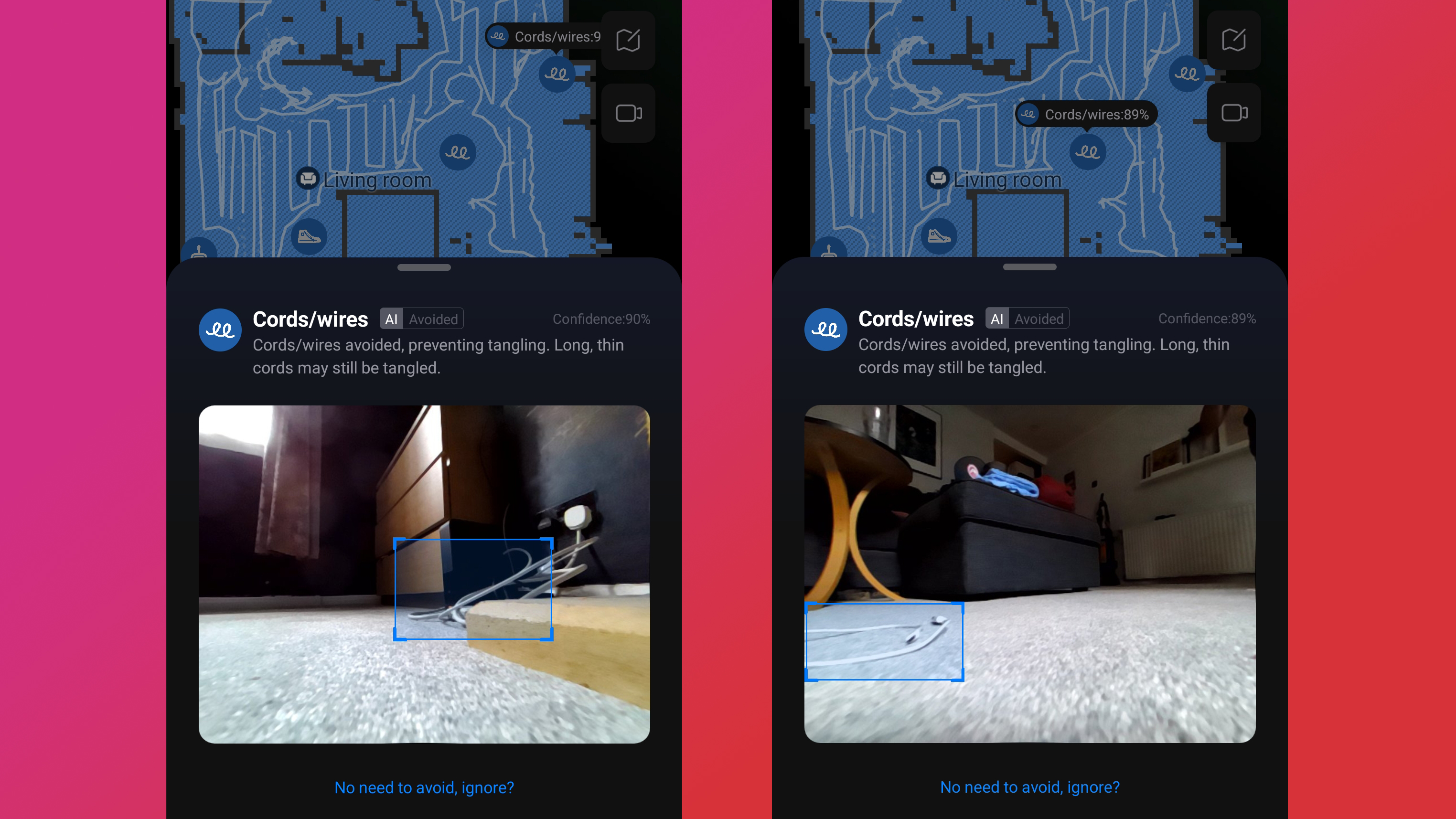Fujifilm Instax Wide 400 review: wide appeal?
Fujifilm Instax Wide 400: One-minute review
The Fujifilm Instax Wide 400 is one of the best instant cameras for casual photographers who like the appeal of wider prints. It's ideal for landscape photographers and camping trips especially, with the wider format able to capture much more in the frame than other popular Instax Mini cameras, although be prepared to compromise when it comes to portraits.
Unlike other Instax cameras the Wide 400 doesn't have a built-in selfie mirror, and instead comes with a fiddly mirror attachment that doubles up as a macro lens. This can be clipped onto the Wide 400's lens when you want to take a selfie or portrait of a subject, or anything that's roughly 40-50cm away from the end of the lens.
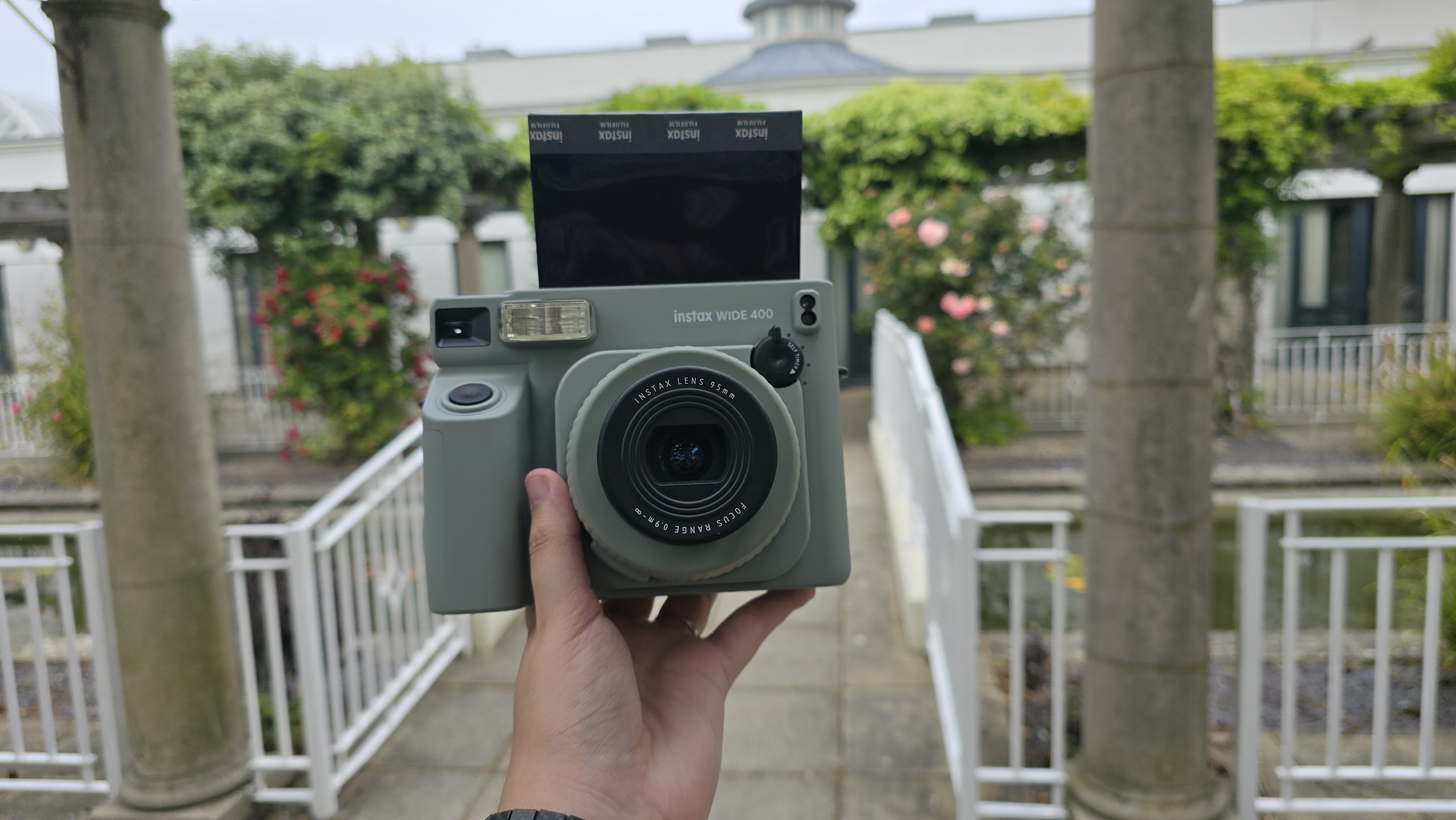
During testing, I found the focusing process takes a bit of getting used to, but once you grasp it, and with the help of the enhanced viewfinder and target marker, it can capture pretty sharp shots. The biggest pain points with the Instax Wide 400 are the design and lack of features. Not much has been tweaked from the Wide 300 model other than the addition of the self-timer (which is admittedly very handy) and enhanced viewfinder, but otherwise, it has no modern digital elements like the Instax EVO or Mini 99.
As for the design, the Wide 400 can withstand a lot thanks to its rugged and textured build, and it's very grippy too. With that said, it does feel larger and heavier than necessary, and what was Instax thinking with that color? I think it's one of the worst-looking instant cameras on the market (sorry Instax), and frankly I felt a little embarrassed to shoot with it in public. However, if you can get past the basic features and 'army-green' finish, it could be a worthwhile addition to your analog camera collection, and the print quality is good.
Fujifilm Instax Wide 400: Price and availability
The Fujifilm Instax Wide 400 is available for $149.99 / £129.99 / AU$229.99, which I think is a fair price compared with other Instax models. The Instax Square SQ40 retails at the same price, and other models are only marginally more affordable with similar features – you can check out more options in our best Instax Mini prices round-up .
However, a wide-format competitor such as the Lomography Lomo'Instant Wide (priced at $169 /£149) might offer more for your money in terms of creative control, with options for multiple exposure and optional flash – and it takes Instax Wide film too. There's also the retro Instax 500AF to consider if you can find one, which Redditers seem to be raving about lately.
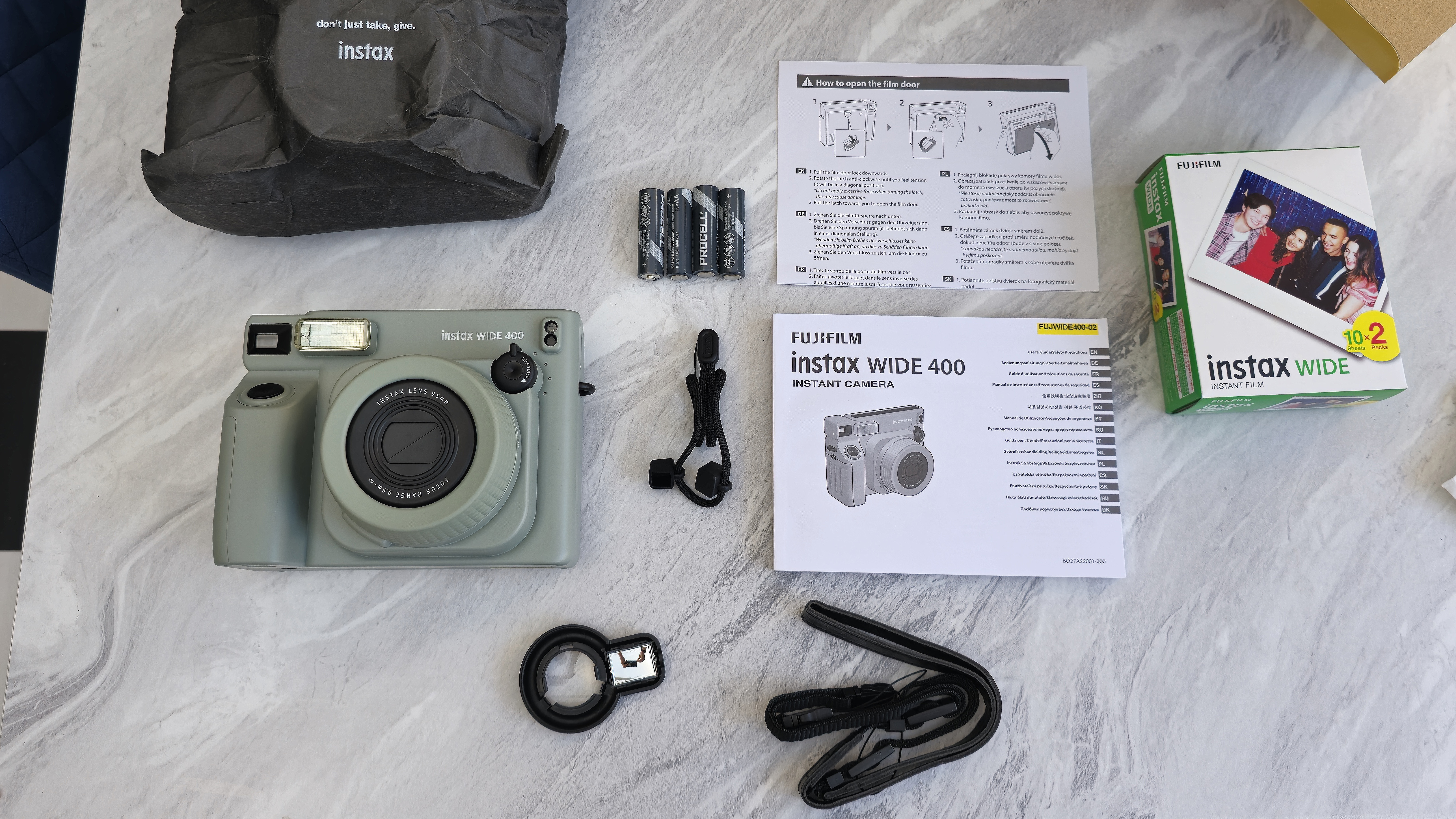
Fujifilm Instax Wide 400: design
- Better looking than the Wide 300
- Very rugged and sturdy build
- What's with the green?
The Instax Wide 400 might not be the prettiest Instax on the market, but the design has certainly improved since the Wide 300 model, with the sticky-out viewfinder ditched in favor of a more appealing and clean-cut build. The body is still made from a smooth plastic, which doesn't help it fit in very well among its more premium-looking Instax cousins, and while the textures around the lens barrel and battery compartment are great for grip, I think it makes the camera look a little juvenile.
As for the general design, the Instax Wide 400 is rugged, heavy, and bulky. It's not until you get this camera in your hands and lay eyes on it that you realize just how big and wide it is. I would say that my hands are medium-sized, so I'm not sure if the hands-on images in this review are doing it justice. Or maybe it's because I'm used to handling my Instax Mini 40 and Mini 99 models that this camera feels so abnormally large to me.
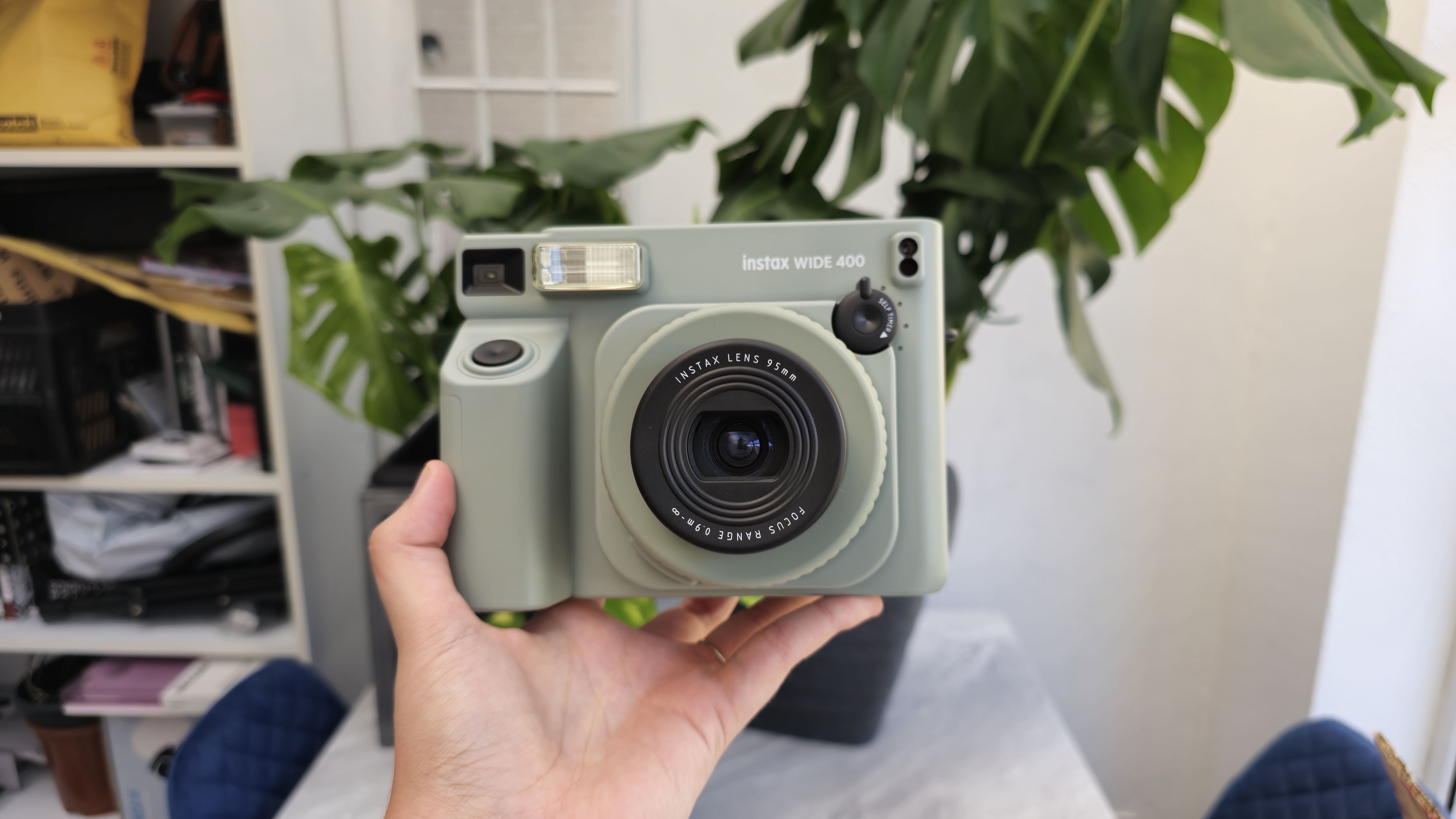
There's no built-in selfie mirror but, like the Instax Wide 300, the Instax Wide 400 comes with a clip-on macro lens attachment that has a mirror poking out of the side. With this camera being so large I don't think it would have taken much to include a built-in selfie mirror on the lens itself, but it's better to have one as an accessory than not at all.
Speaking of accessories, there's also a new angle-adjustment accessory that comes with the Wide 400. This comprises two black plastic wedges of different sizes on a separate strap (i.e., not the main camera strap) which you can place under the camera to tilt it upwards when it’s placed on a surface for selfies or group shots.. This worked quite well when I tested it, and it's a clever method that saves you having to look for handy objects on which to prop the camera.
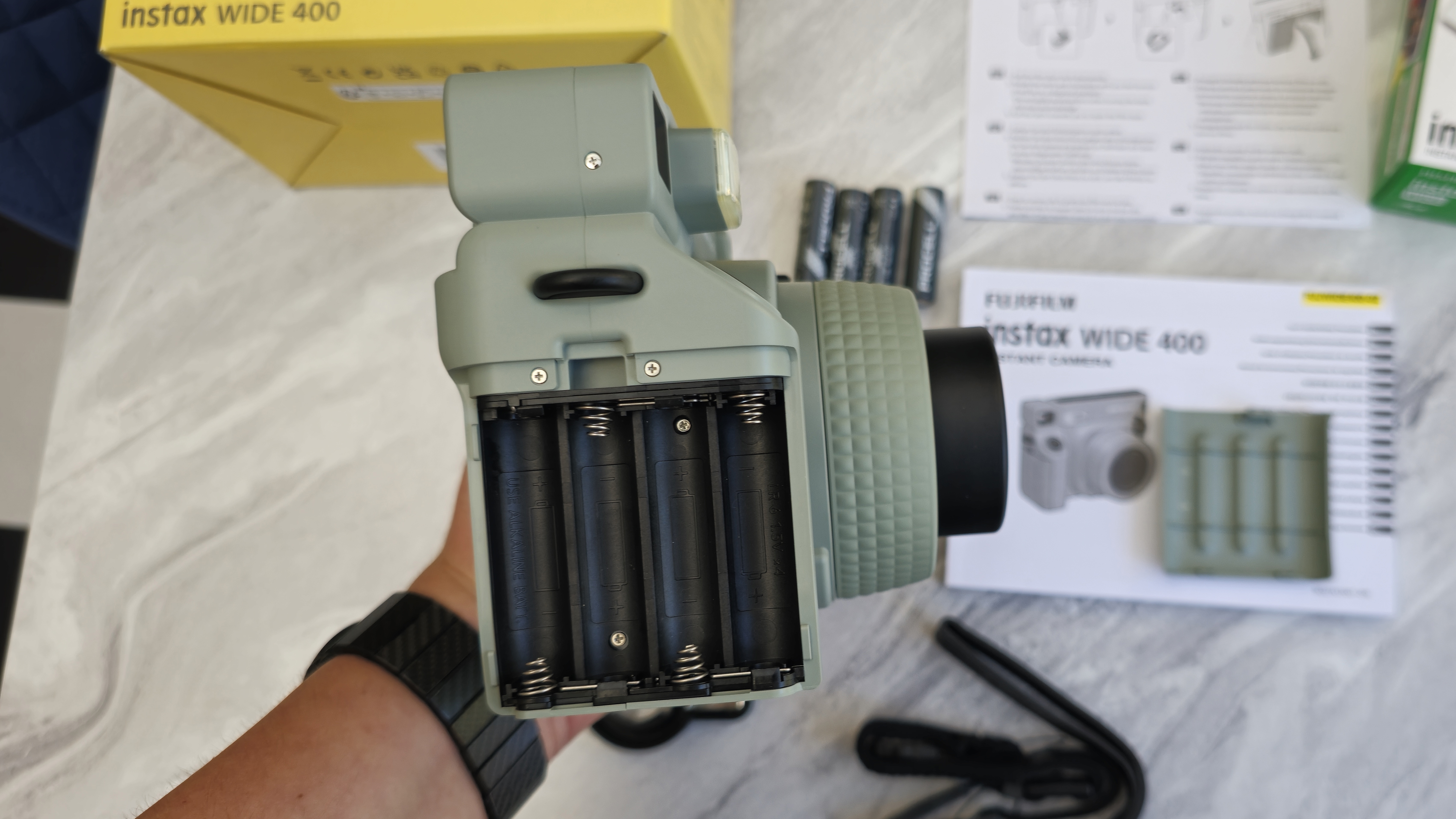
Possibly my biggest gripe with the design of the Instax Wide 400 is that it's only available in a single color option, at least for now – and what was Instax thinking with that awful green shade? It's worth mentioning that a lot of the promotional images make this camera appear more teal, but in reality it's green, and a slightly dull 'army green' at that. Yet, despite the green finish, the Instax Wide 400 could also pass as a kid's camera from a distance.
I've never been self-conscious walking around with a camera before, but the Wide 400 is so large and unappealing that it draws a lot of attention to itself, and to whoever's holding it, and I felt a little embarrassed taking it out to my local seaside town during testing. I guess if you think of the Wide 400 as a camera that's intended for outdoorsy types, landscape photographers, and camping trips, then the green color choice makes a bit more sense than say, bright pink.
Fujifilm Instax Wide 400: Performance
- Can capture very sharp shots when used correctly
- Selfies are tricky (unless you have long arms)
- The self-timer is the perfect feature for group photos
- Lacks other modern features
I thoroughly enjoyed my time testing the new Instax Wide 400 camera, and I certainly get the appeal of wider-format film (which is double the width of two Instax Mini prints) when it comes to landscape photography and capturing group selfies. The camera takes really nice-looking photos in normal mode, as well as in landscape mode, and you can expect the usual Instax quality in the prints produced.
However, I found that using this camera for self-portraits and with close-up subjects is where its performance faltered. The included clip-on lens attachment shortens the focus range of the camera to 40-50cm, and is intended for taking photos of closer subjects as well as self-portraits at arm’s length. With this in mind, I used my dog Tilly as my test subject for a few shots, and found that it was very hit-and-miss with the focus (see the sample images below).
I tried to capture the same shot a few times by switching up the distance between me and Tilly, while using the upgraded viewfinder and target spot to keep her center frame. It was difficult to estimate the distance between myself and Tilly, and I took a photo in normal mode without the lens attachment for comparison, but all that was in focus was the background behind her. In short: when used correctly, the camera plus lens attachment can produce very sharp results, but it will take some experimentation, and a fair few failed prints, before you get the hang of it.

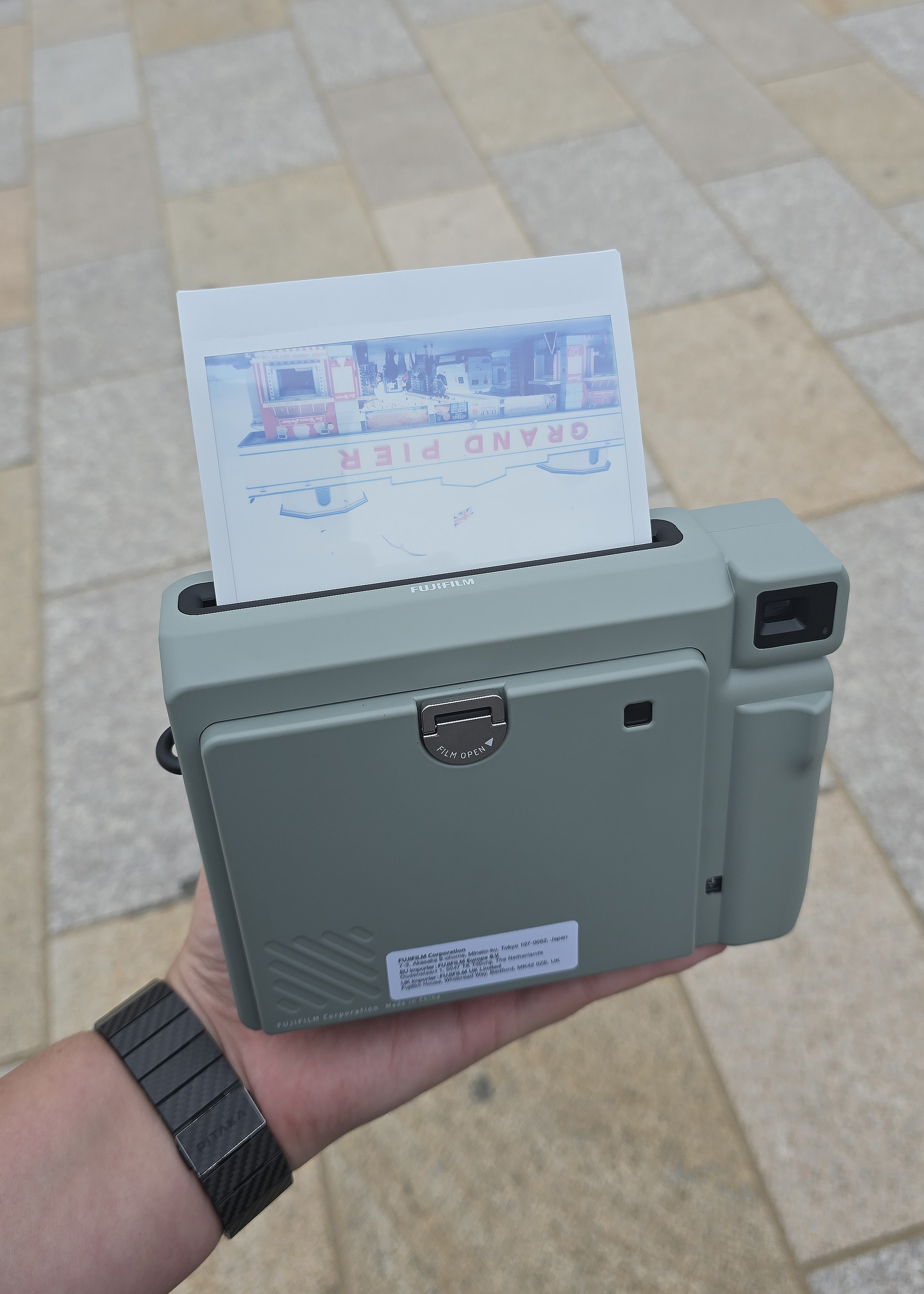

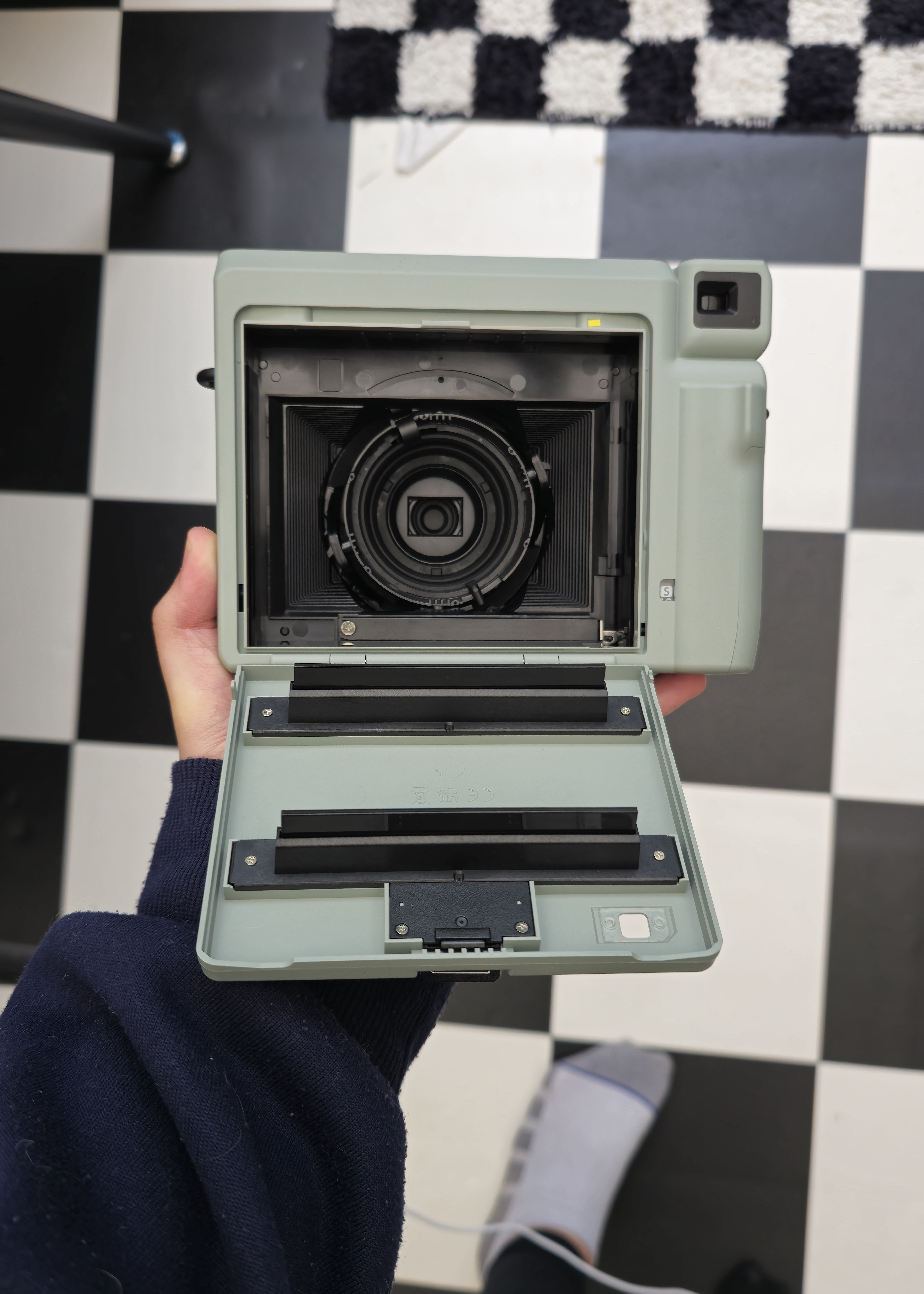
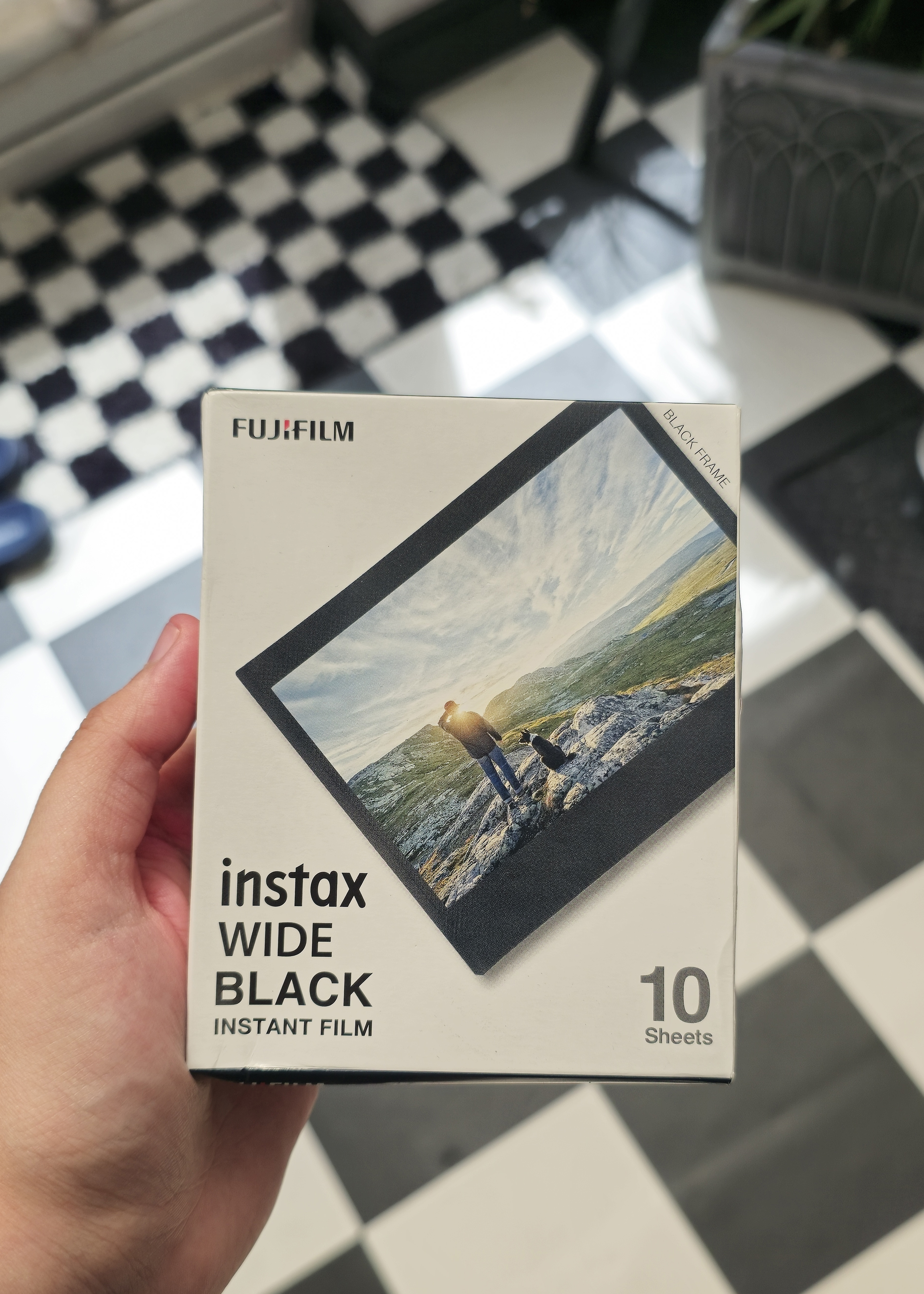
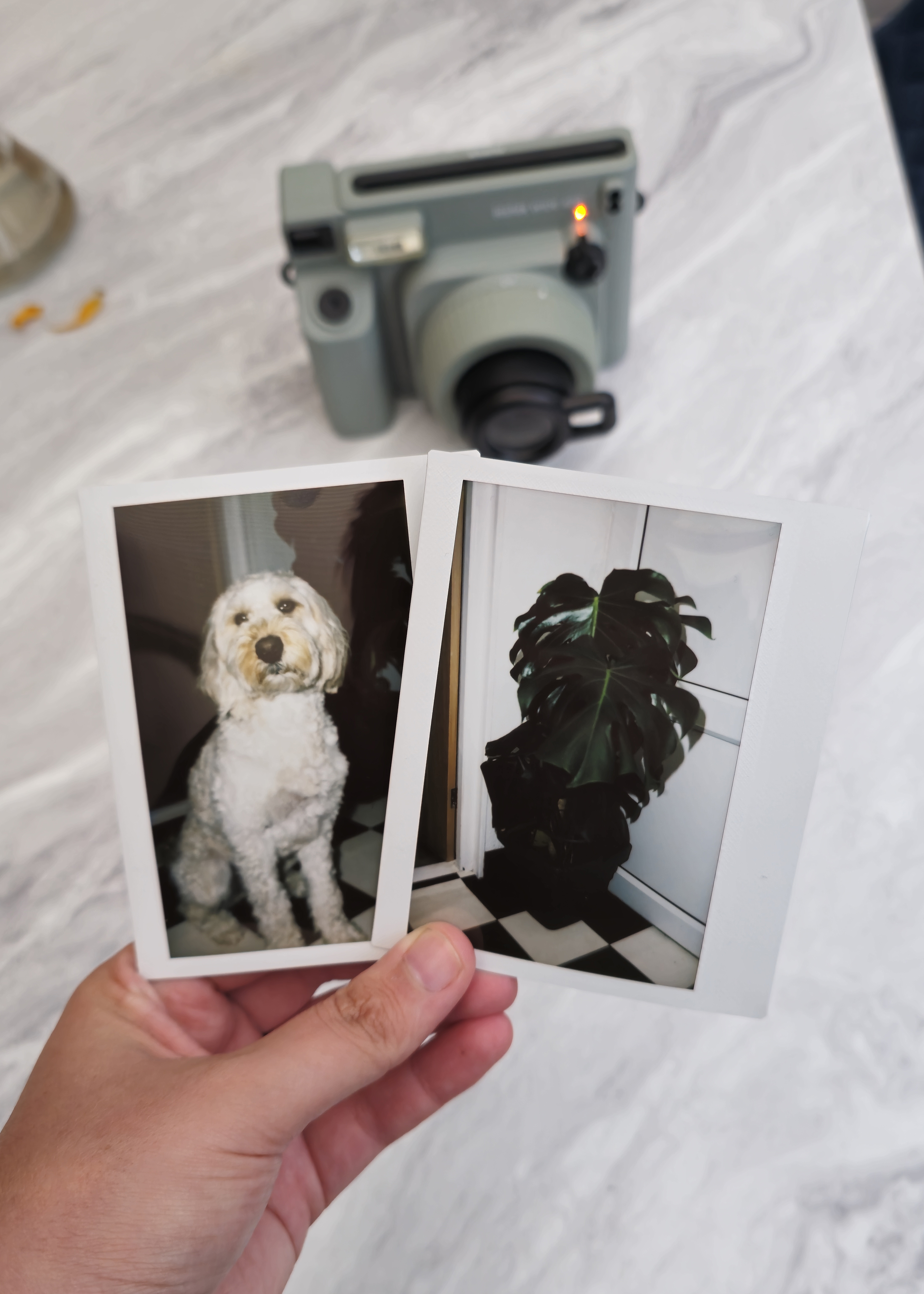
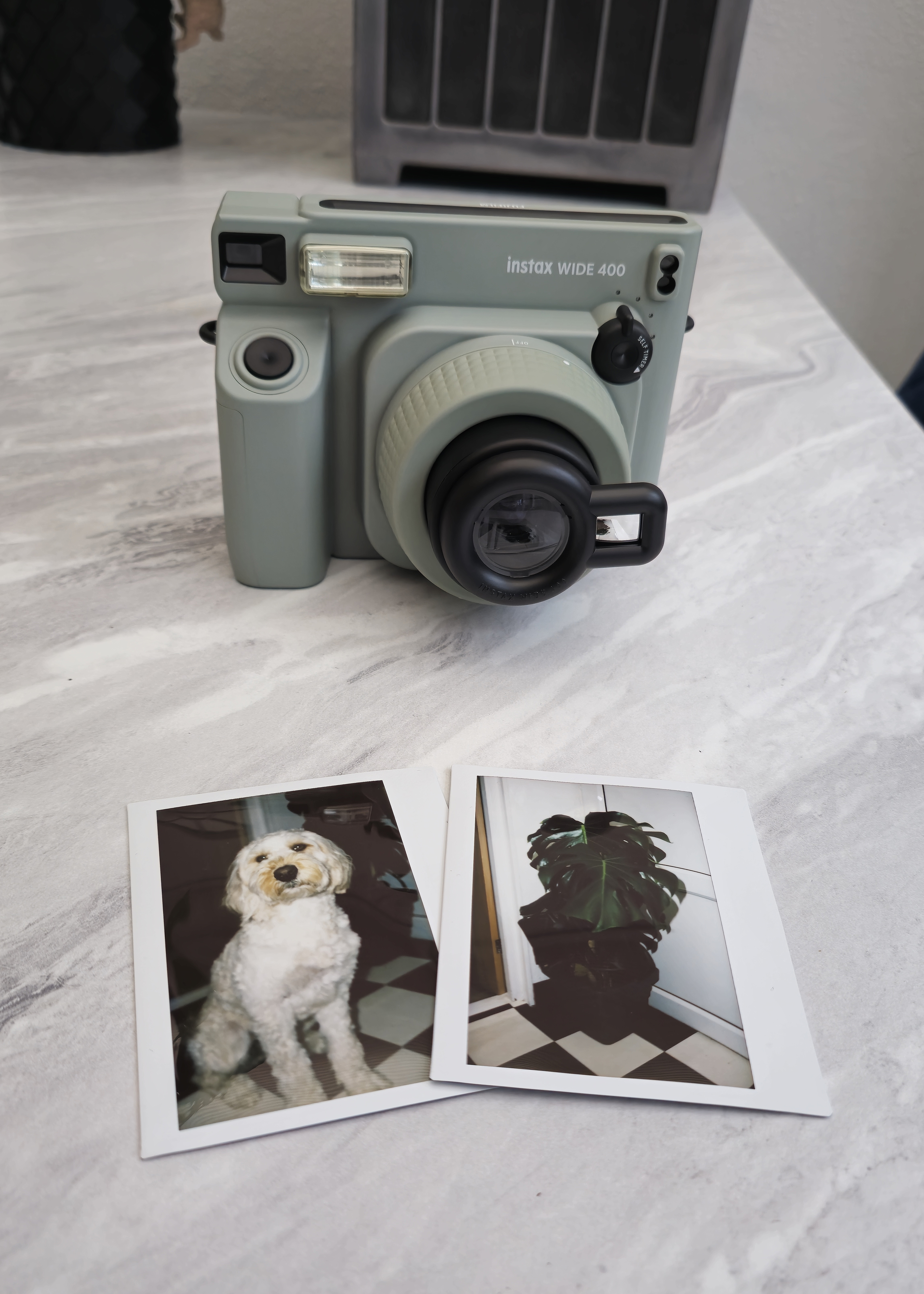


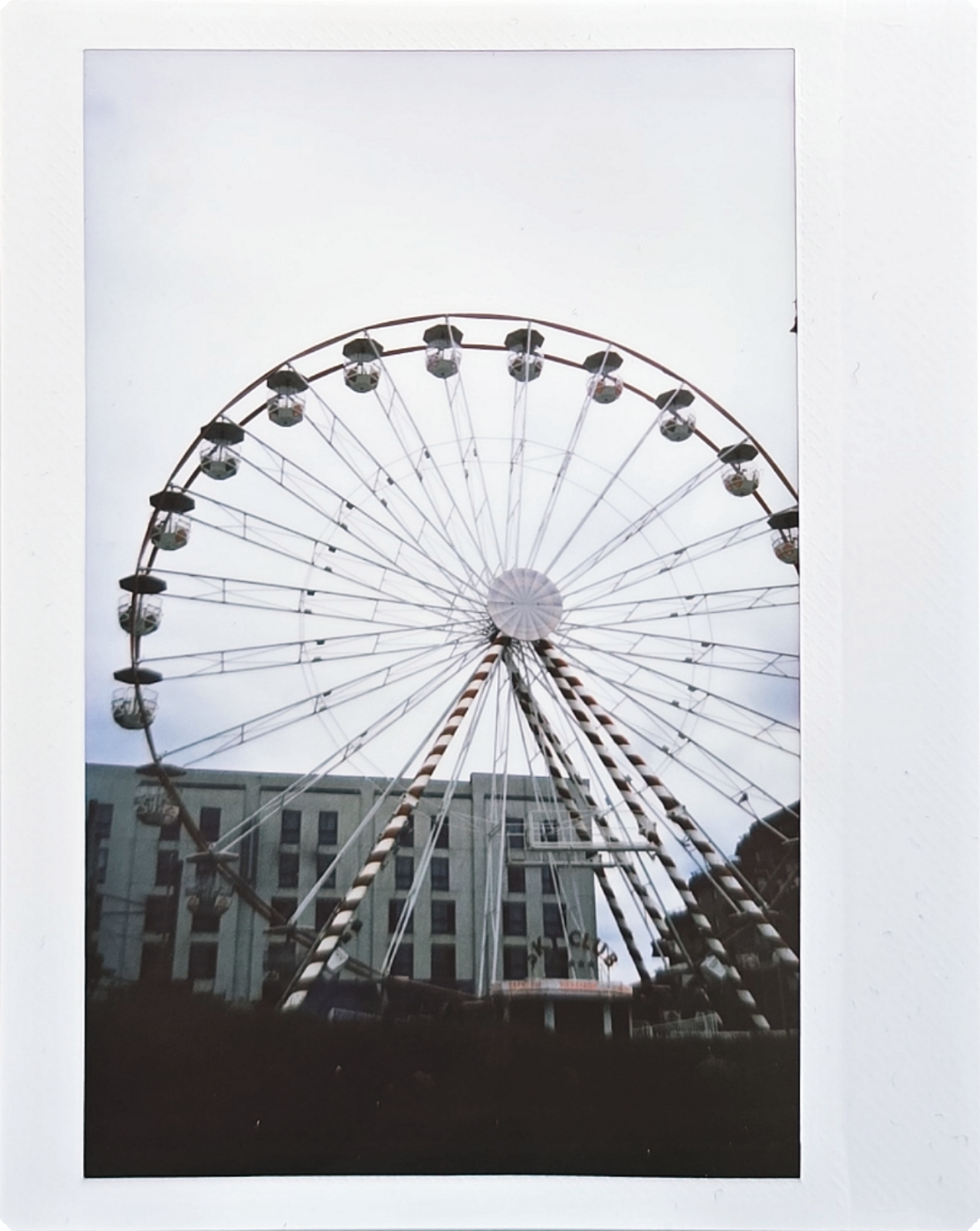
As for selfies, these was again very tricky to master using the selfie mirror and close-up lens attachment. I also found during testing that my arms just weren't long enough to hold the camera in front of me and press the shutter while keeping my face in frame, which in hindsight, is probably why Instax chose to add the self-timer feature, and has heavily pitched the Wide 400 as a camera for group selfie shots using some kind of stable surface or tripod.
The self-timer is definitely the most useful feature on the camera, and the only 'modern' upgrade. The one-button camera design with automatic exposure is great for beginners and very user-friendly, although it doesn't offer any real benefit for photographers who like to take control of the shot and make adjustments to manual exposure. This is a little disappointing, given that most new products from Instax allow for some creative control and experimentation.
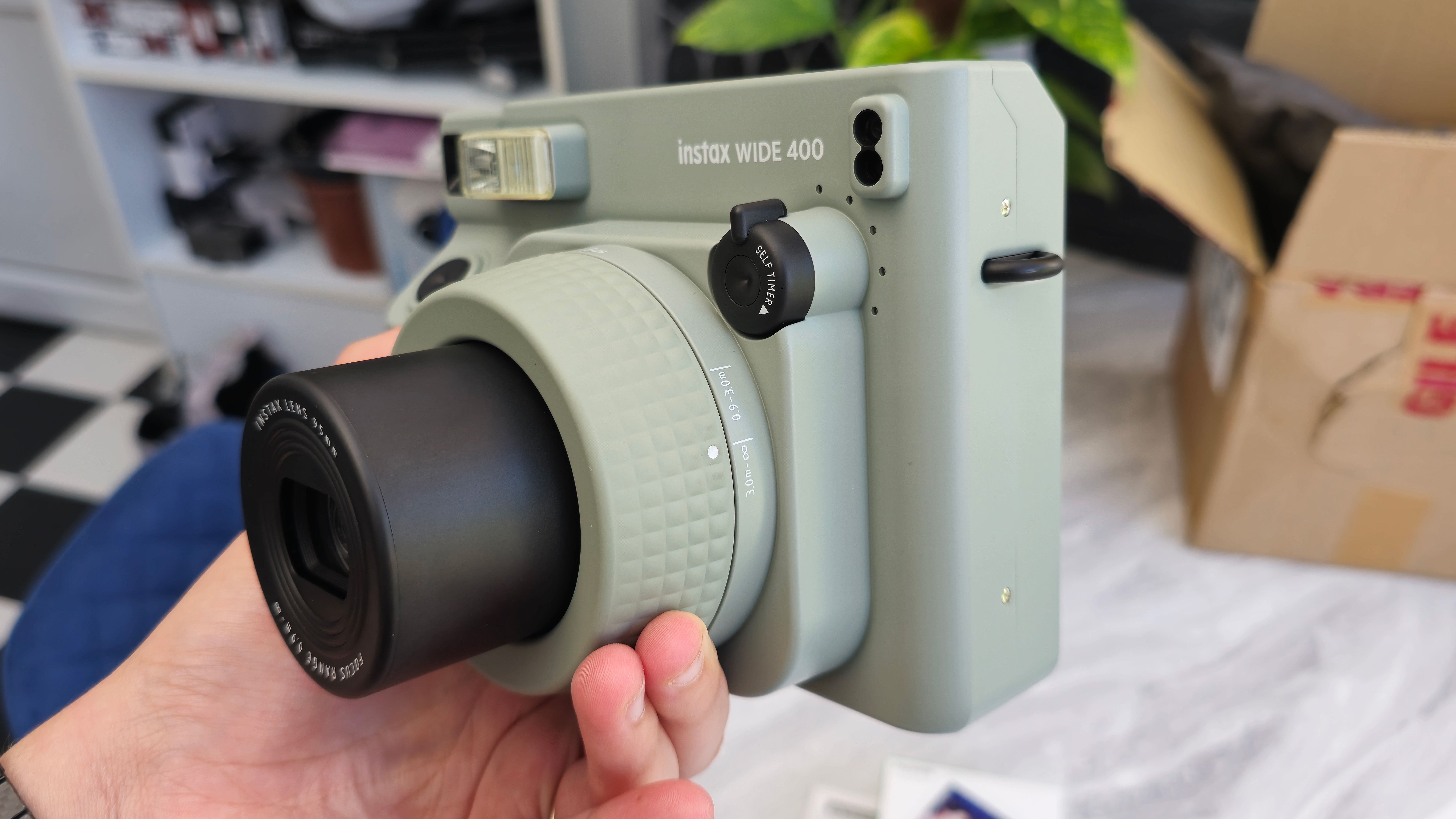
For example, the latest Instax mini 99 camera is the most advanced Instax to date, with fancy new exposure control dials, a double exposure feature, and unique light leak filters. The Instax mini EVO, meanwhile, is an excellent hybrid instant camera, blurring the lines between digital and analogue.
I was hoping Instax might bring these new tools to formats other than the Instax Mini series, but that's not the case here. Even adding a bulb mode, or the option to toggle the flash without having to cover it with your finger, would have been useful.
I also found that this camera didn't perform as well in darker conditions, even when subjects were well-lit and when using the flash. I shot a photo of some sunflowers in a vase in my conservatory when the room was still very light, and the print came out dark. I took the same image the following morning and it was much brighter. I didn't realize this would have such a big impact, as shown in the images below.
Fujifilm Instax Wide 400: Sample images
It's important to recognize that this is not a camera for serious photographers, so if you're looking for high-res studio-quality images then look elsewhere. But if you're just after a bit of fun, and an affordable way to share physical memories and keepsakes with others, then the Instax Wide ticks a lot of boxes.













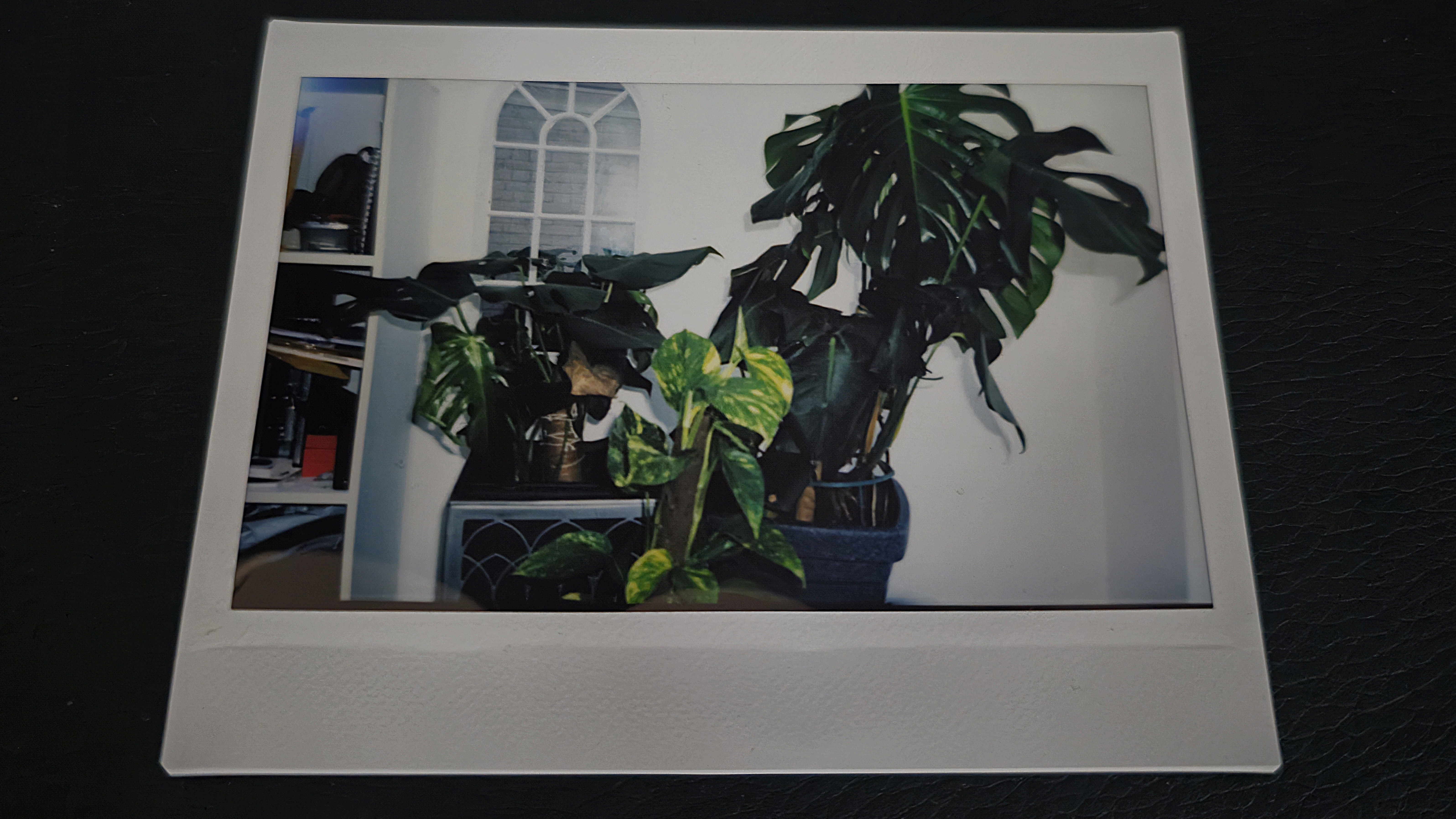



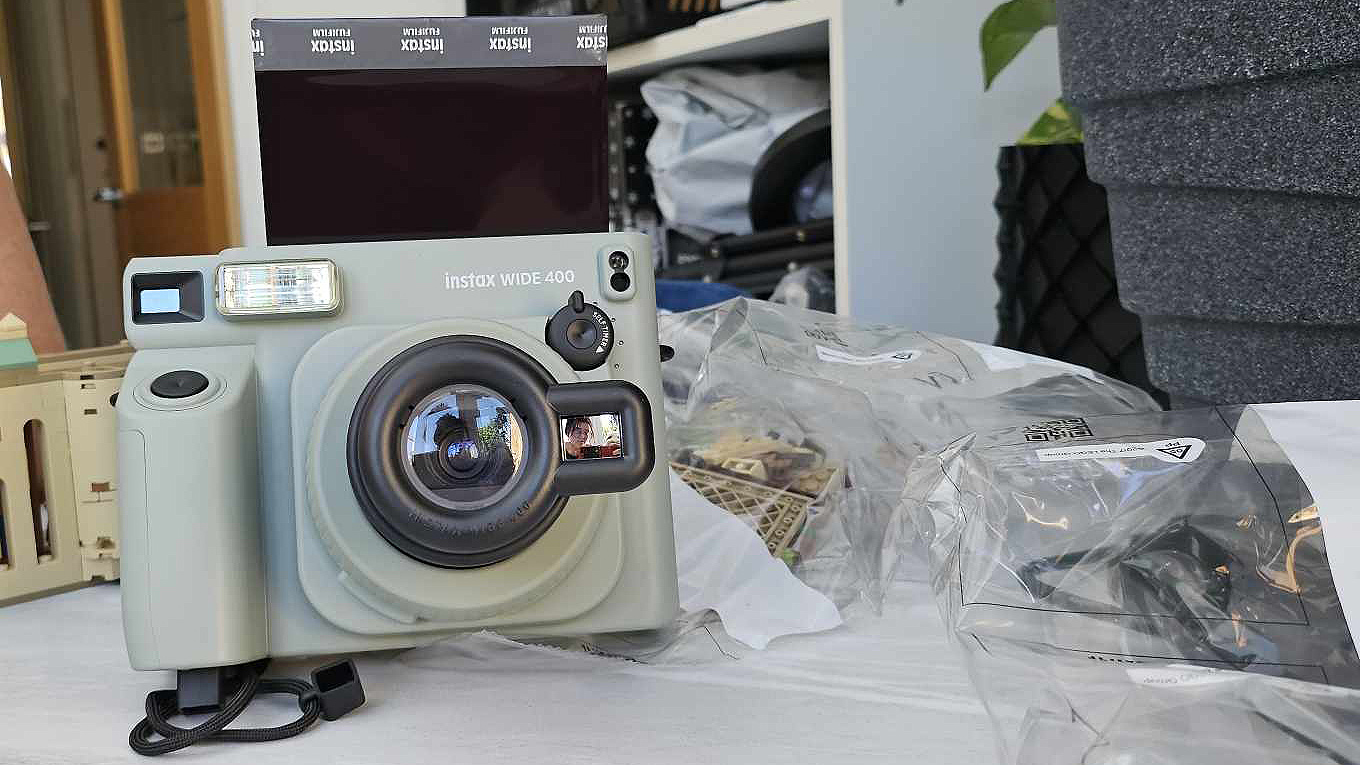
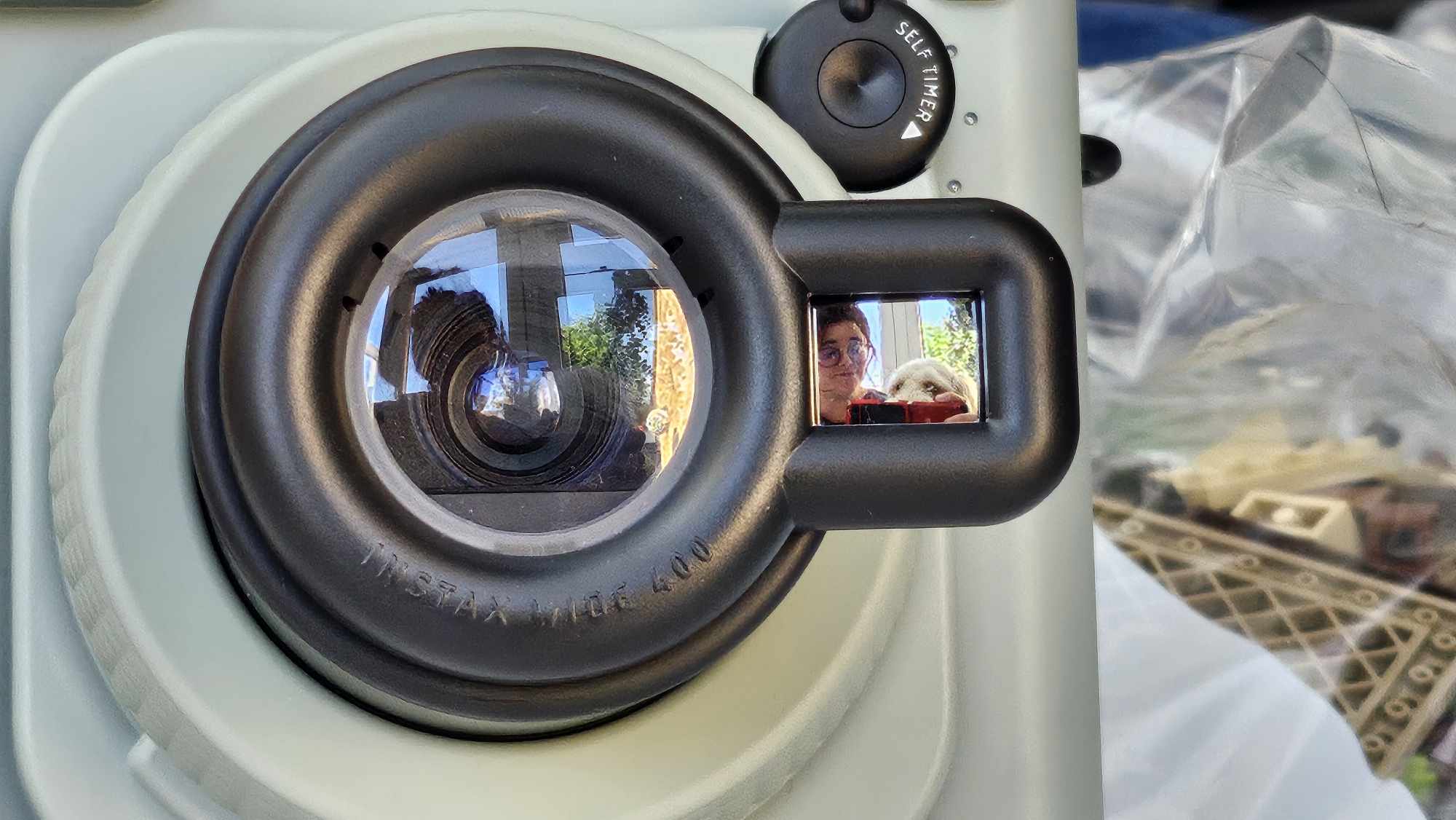
Should I buy the Fujifilm Instax Wide 400?
Buy it if...
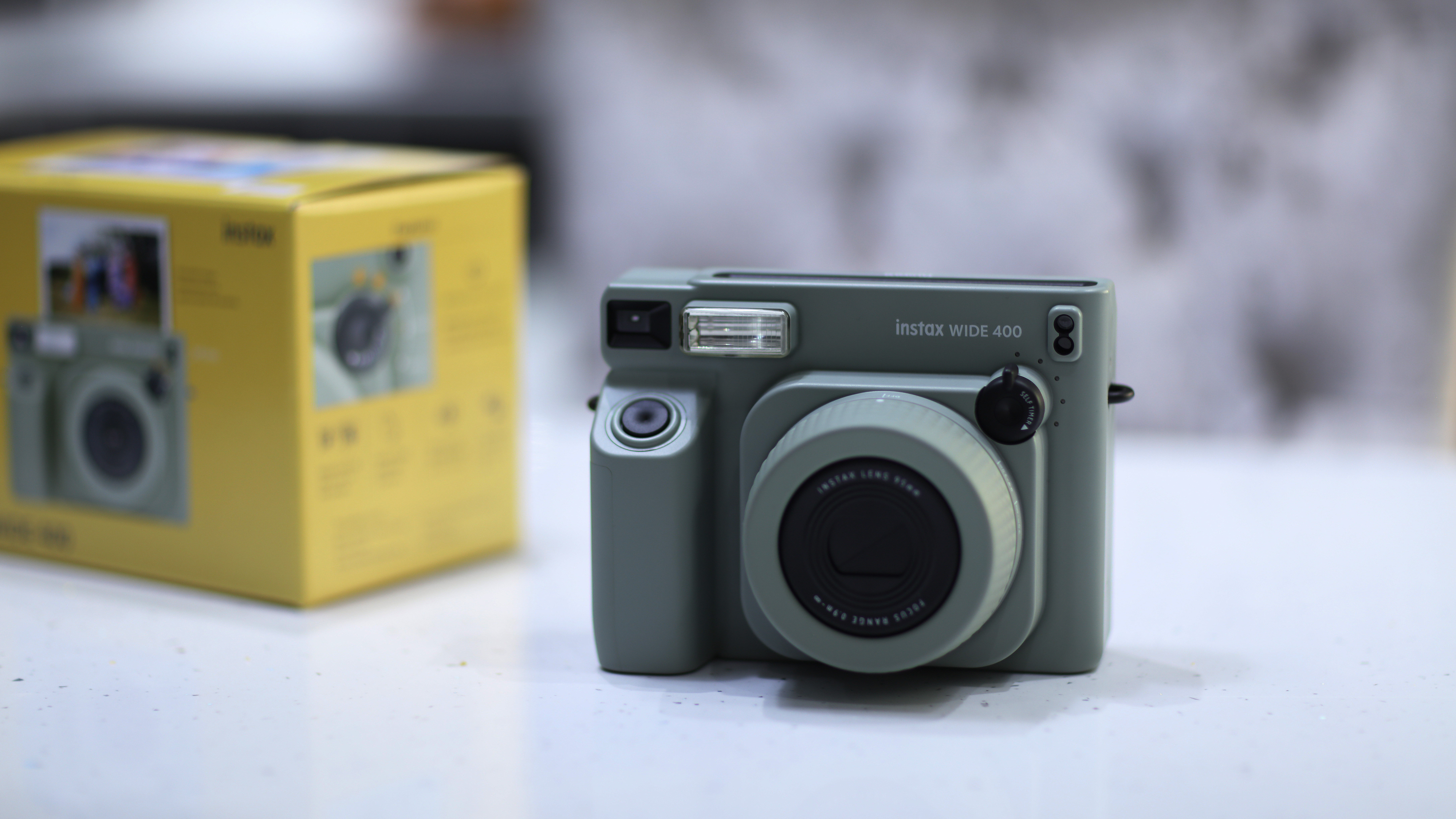
Don't buy it if...
How I tested the Fujifilm Instax Wide 400:
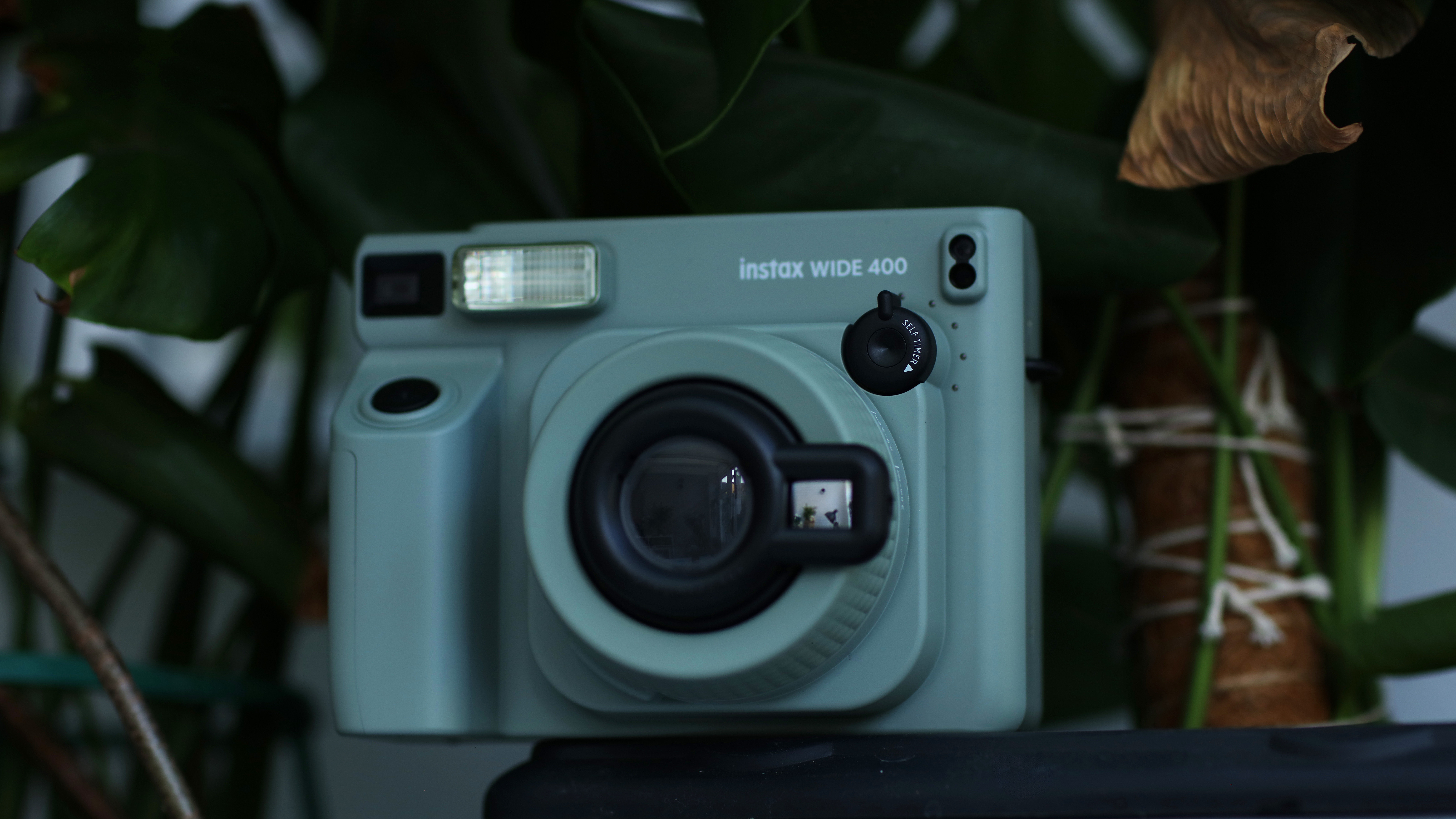
- I used two packs of Instax Wide film (20 shots) and one pack of the black edition wide film (10 shots)
- I used the camera in a variety of indoor and outdoor locations, and in cloudy, overcast, and sunny conditions
- I experimented with self-portraits, group portraits, and closer subjects
I used the Fujifilm Instax Wide 400 for a few weeks, and I felt that I really put this camera through its paces. I aimed to test out the quality of the prints produced in a variety of conditions, including different lighting setups, alternating weather conditions, varied subject matter, with and without flash by covering it with my finger, and for both selfies and group photos.
I mainly tested the performance of this camera by venturing around my local high street and seaside resort in the south-west of England, capturing a mix of landscape and portrait images. It wasn't all about the print quality though, as I also wanted to test the camera's handling and user-friendliness.
